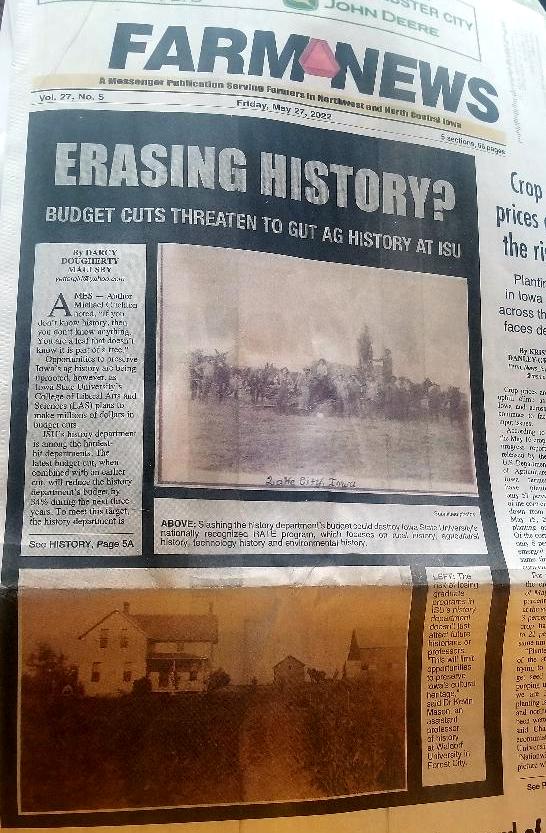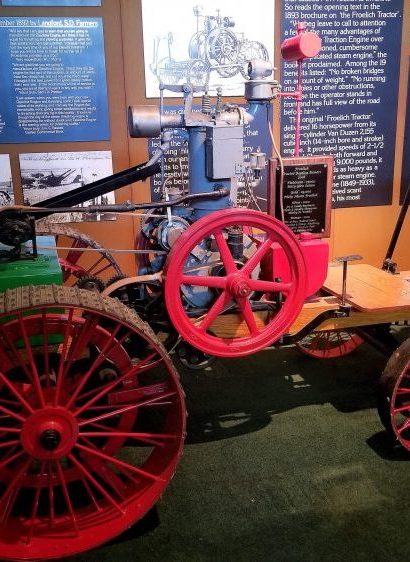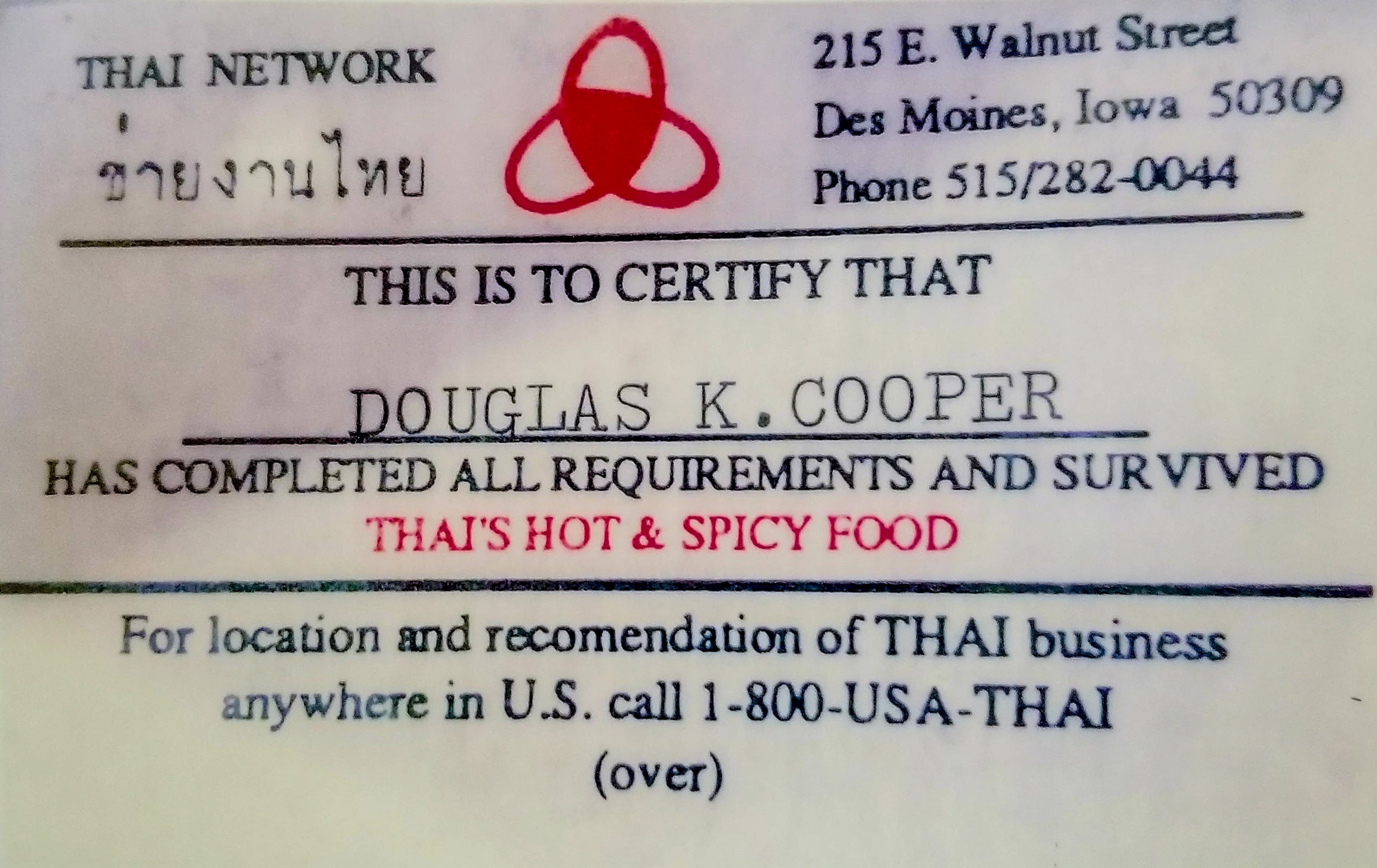
Whats HOT
Latest Posts
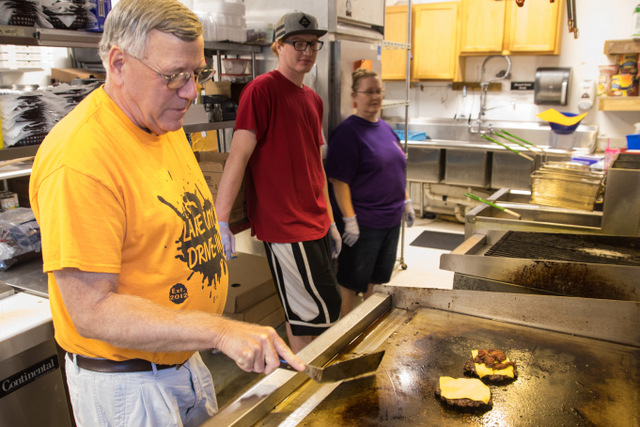
Iowa Beef Booster: Larry Irwin Takes a New Twist on Burgers
Make no mistake, the humble hamburger still reigns supreme from backyard barbecues to fast-food drive-ins across Iowa. But this Iowa icon also provides the perfect palette for culinary creativity when my friend Larry Irwin showcases his Burger of the Month flavors in my hometown of Lake City.
“I’m not doing anything fancy,” said Irwin, who has run the Lake City Drive-In since 2012. “I just like cooking down-home, comfort food.”
While it’s hard to beat a classic bacon cheeseburger, which remains one of the Lake City Drive-In’s top sellers, customers also love the monthly burger specials. Favorites include the Taco Burger (spiced with taco seasoning and chipotle and topped with nacho-cheese flavored chips), Darcy’s Meatloaf Burger, the Swiss Mushroom Burger, and the Ranch Burger (enhanced with homemade ranch dressing, pepper jack cheese and bacon).
“Burgers of all types are always our top sellers,” said Irwin, who serves more than 50 burgers a day, on average. “It’s fun to experiment with new flavors and feature them as the Burger of the Month.”
Top tips for unbeatable burgers
Interestingly, this adventurous spirit in the kitchen isn’t second nature for Irwin, who spent more than 30 years of his career in finance and banking. “I never did much cooking at home,” said Irwin, who grew up on a cattle and grain farm between Lohrville and Rockwell City. “I certainly never thought I’d run a restaurant.”
Irwin has found that offering new men
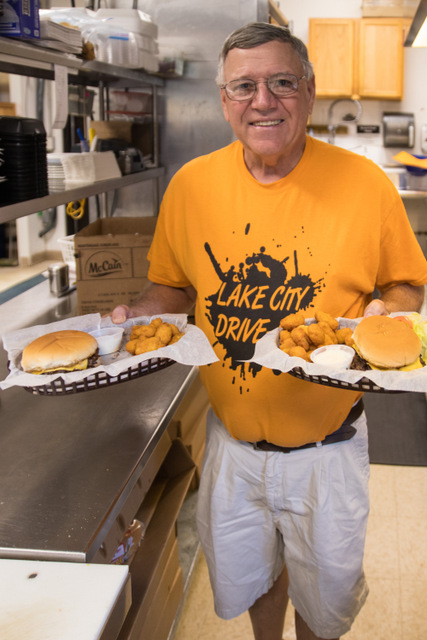
Larry Irwin shows off some tasty burgers from the Lake City Drive-In.
u items is one of the secrets to keep people coming back to the Lake City Drive-In. Inspiration for the Burger of the Month comes from a variety of sources.
“Sometimes our customers suggest ideas,” Irwin said. “A lot of the Burger of the Month ideas come from my son, Chris, who is an agronomist in northeast Iowa. He travels a lot for his job and tells me about burger flavors he discovers in various cafes.”
While unique flavors are part of the fun, a great burger starts with the basics, said Irwin, who shares the following tips:
• Select an 80/20 ground beef for the best flavor. Irwin always uses fresh beef, never frozen patties, to make his 1/3 pound burgers.
• Preheat the grill before you place the hamburger patties on the grill.
• Cook the hamburger patties over medium heat. If the temperature is too high, it’s easy to burn the outside of the burger and leave the inside undercooked, said Irwin, who cooks his burgers for about five minutes on each side.
• Season the patties on the grill. Irwin sprinkles a mix of garlic powder, onion powder, Lawry’s seasoning salt, table salt, white sugar and black pepper on both sides of each hamburger patty as the meat cooks.
• Don’t forget to butter and toast the bun before serving the burger.
Time-saving systems in the kitchen are also invaluable. Since the Lake City Drive-In is located on Main Street across from South Central Calhoun High School, things can get hectic when hungry crowds stop by, especially during volleyball tournaments and home football games. Irwin plans ahead on these days and cooks each hamburger patty for two minutes per side before placing the partially-cooked patties in a warm slow cooker. When the crowds arrive, it only takes a couple more minutes of grilling time before the burgers are ready.
This strategy also pays off during planting and harvest, when the drive through becomes one of the busiest places at the Lake City Drive-In. “You can always tell when an order is going out to farmers, because there are at least five or six cheeseburgers in there,” said Irwin, who farmed at one point in his career.
Keeping things simple while adding a little variety is the key to a great burger, Irwin added. “I love the flavor of beef. If I could only have one meat for the rest of my life, I’d choose hamburger, because I can make anything out of it.”
Hungry for more? Check out my blog post and Farm News column “Get Your Grill On: How to Build a Better Burger.”
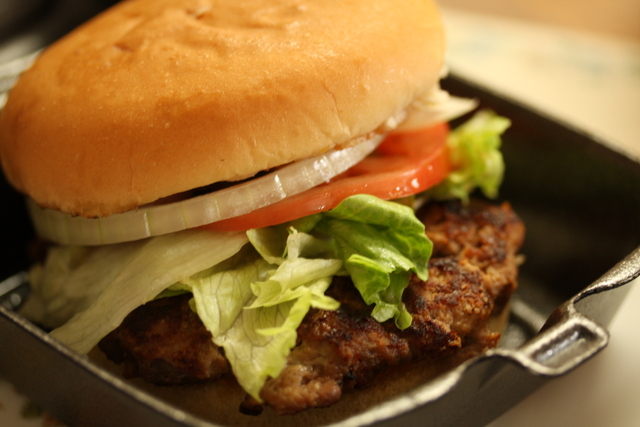
Darcy’s Meatloaf Burger
Darcy’s Meatloaf Burgers
Larry Irwin will be featuring these Meatloaf Burgers, made from my recipe, as the Burger of the Month in June 2017.
2 pounds ground beef
1 1 / 2 to 2 cups herb-seasoned stuffing mix (experiment to find what amount helps the burger patties stick together the best)
1 onion, chopped
1 teaspoon seasoning salt
1/4 teaspoon freshly-ground pepper
1 teaspoon garlic powder
2 large eggs, lightly beaten
1 /4 cup milk
2 tablespoons barbecue sauce
1 / 4 cup ketchup
2 tablespoons brown sugar
1 teaspoon dry mustard
Combine ground beef, stuffing mix, onion, salt, pepper and garlic powder. In a separate bowl, beat eggs, milk, and barbecue sauce. Combine barbecue sauce mixture with meat mixture.
In a separate bowl, combine ketchup, brown sugar and dry mustard. This mixture can either be spread as a glaze while the burgers are cooking on the grill, or the glaze can be mixed into the burger patty mixture before the burgers are grilled.
Shape beef mixture into patties. Grill over medium heat to desired doneness. If using the ketchup mixture as a glaze, spread over the top of each burger during the final minutes of cooking on the grill.
Ranch Dressing
While this makes restaurant-sized quantities, scale down the recipe for home use.
1 gallon regular mayonnaise
1 / 2 gallon buttermilk
2 packages (3.2 ounces each) powdered ranch dressing mix
Combine all ingredients and stir with an electric mixer. Refrigerate.
Boom Boom Sauce
This spicy sauce has a kick and tastes great on burgers and salads.
4 cups Thousand Island dressing
3 / 4 cup buffalo hot sauce
1 / 4 cup red pepper flakes
Combine dressing, buffalo sauce and red pepper flakes; refrigerate.
Sloppy Joes
1 pound hamburger
1 can chicken gumbo soup
Ketchup and mustard, to taste
Brown sugar, to taste
Salt and pepper, to taste
Brown the hamburger; drain. Add soup and season with ketchup, mustard, brown sugar, salt and pepper until the desired flavor is achieved.
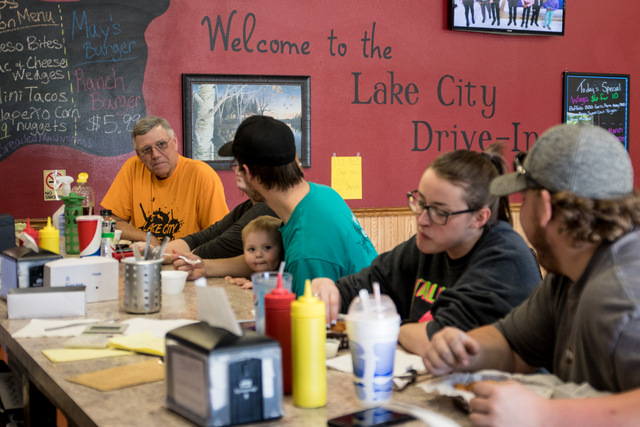
This story first ran on Farm News, May 2017.
Want more Iowa culture and history?
Read more of my blog posts if you want more Iowa stories, history and recipes, as well as tips to make you a better communicator.
If you’re hungry for more stories of Iowa history, Larry is kind enough to carry my books at the Lake City Drive-In. You can also check out my top-selling “Culinary History of Iowa: Sweet Corn, Pork Tenderloins, Maid-Rites and More” book from The History Press, as well as my Calhoun County” book from Arcadia Publishing, which showcases the history of small-town and rural Iowa. Order your signed copies today! Iowa postcards are available in my online store, too.
P.S. Thanks for joining me. I’m glad you’re here.
@Copyright 2017 Darcy Maulsby & Co.
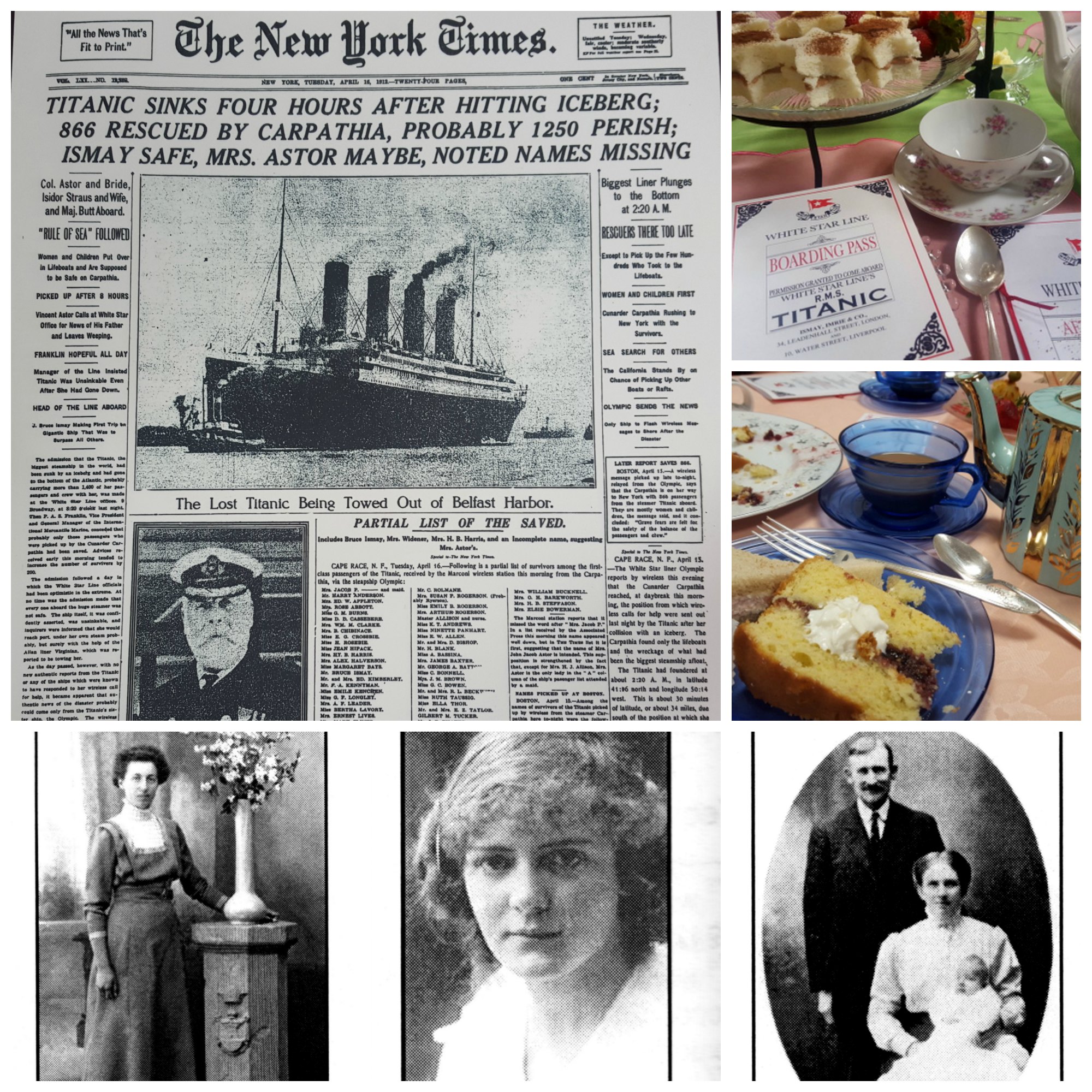
Iowa’s Lost History from the Titanic
I perished on the Titanic, yet I’ve lived to tell the forgotten stories of Iowa’s ties to one of the most famous luxury liners in history. It all started when I attended the Johnson County H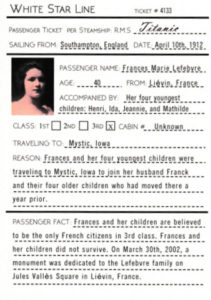 istorical Society’s “Afternoon Tea on the Titanic” in April 2, 2017, and my boarding pass said I was third-class passenger Frances Lefebvre, 40, of Lievin, France.
istorical Society’s “Afternoon Tea on the Titanic” in April 2, 2017, and my boarding pass said I was third-class passenger Frances Lefebvre, 40, of Lievin, France.
As Lefebvre, my four youngest children and I were traveling to Mystic, Iowa, to join my husband, Franck, and our for older children who had moved to Iowa a year prior. I died, along with my four youngest kids, during the sinking of Titanic in the early-morning hours of April 15, 1912.
I was not alone. Of the approximately 2,207 passengers who boarded the Titanic, only an estimated 705 survived. Like Frances Lefebvre, a number of Titanic’s passengers had ties to Iowa. Here are their stories.
Titanic survivor, Orphan Train rider kept low profile in Council Bluffs
One of Titanic’s last living survivors lived in Council Bluffs for decades and rarely spoke of the maritime tragedy or her connection to the Orphan Train Movement.
Helen Delaney’s remarkable story began when she was thrown overboard as Titanic sank. Someone caught the 4-year-old, and she survived the night, although her parents perished. While the family had boarded the ship in England, the names of Delaney’s birth parents are unknown, and Delaney’s didn’t know her exact birth date, according to a 2012 news report in the Council Bluffs Daily Nonpareil.
With the other Titanic survivors, Delaney arrived in New York on April 18, 1912, where she was placed in an orphanage. James P. Delaney, a Council Bluffs locomotive engineer for the Chicago, Burlington & Quincy Rail Company (now BNSF), and his wife adopted the girl after she arrived in Council Bluffs via an orphan train sometime in the mid to late 1910s.
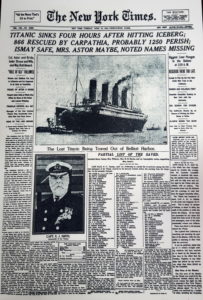 Orphan trains brought thousands of children to Iowa and beyond
Orphan trains brought thousands of children to Iowa and beyond
Children on these orphan trains ranged in age from about six to 18, and they shared a common grim existence. There was little hope of a successful future for these kids if they stayed in the streets, slums and orphanages of New York City.
Their numbers were staggering. An estimated 30,000 children were homeless in New York City as early as the 1850s. The plight of these abandoned, neglected children commanded the attention of a young minister named Charles Loring Brace. He believed that by removing youngsters from the poverty of the city and placing them with Christian farm families, these children could have a chance of escaping a lifetime of suffering.
Brace, who founded the Children’s Aid Society, proposed that these children be sent by train to live and work on farms out west. They would be placed in homes for free but they wouldn’t be indentured.
Children like Helen Delaney boarded westbound trains in groups of up to 40, accompanied by two agents from the Children’s Aid Society. Advertisements appeared in local newspapers along the route in advance of each orphan train’s arrival. When the trains stopped, the children were paraded in front of the crowd and took turns giving their names, singing a song or “saying a piece,” according to “Lost Children: Riders on the Orphan Train,” an article that appeared in HUMANITIES magazine in November/December 2007.
Although the strong demand for the orphans was often motivated by a need for labor, the Children’s Aid Society took pains to ensure the children were well cared for. Families applying to take children had to be endorsed by a committee of local business owners, doctors and other respected community members. Representatives from the society would visit each family once a year to check on conditions, and children were expected to write letters back to the society twice a year, noted the “Lost Children” article.
The Orphan Train Movement, which lasted from 1853 to 1929, placed nearly a quarter of a million children in new homes across the country. This ambitious, unusual social experiment is now recognized as the beginning of the foster care concept in the United States. While some of the children struggled in their newfound surroundings, many others like Helen Delaney went on to lead successful, normal lives as they worked towards the American dream.
Delaney attended school in Council Bluffs, including Mount Loretto Catholic High School. She remained in Council Bluffs, never married and never had children. She lived in anonymity in an apartment at Regal Towers on South Sixth Street, according to the Council Bluffs Nonpareil.
For much of her adult life, Delaney worked as a sales clerk at the Kresge’s five-and-dime store. Only a few people in town knew that this petite, shy, nice clerk had survived Titanic. “She rarely talked about her Titanic legacy,” Dick Warner of the Historical Society of Pottawattamie County told the Council Bluffs Nonpareil in 2012. “Most people who knew her weren’t even aware of it.”
Delaney died on January 26, 1982, at age 74 and was buried at St. Joseph Cemetery off McPherson Avenue in Council Bluffs. She was the only known passenger on Titanic to live in Council Bluffs.
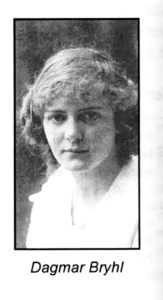
Picture from the book “Not My Time to Die” by Lilly Setterdahl
“Life no longer has any value for me”
Like Delaney, many of Titanic’s survivors and victims were immigrants headed to America to begin a new life. In other cases, the travelers were only planning to visit before returning to Europe. Such was the story of second-class passenger Dagmar Lustig Bryhl, 20, who looked forward to attending a wedding in Red Oak, Iowa, and visiting her uncle Oscar Lustig in Rockford, Illinois, before returning to Sweden.
Author Lilly Setterdahl of East Moline, Illinois, has captured the often heartbreaking—and sometimes heroic—stories of Bryhl and the 122 other Swedes on board Titanic in her fascinating 2012 book, Not My Time to Die. I listened for any tidbits connected to Iowa as Setterdahl related many of these stories during the “Afternoon Tea on the Titanic” in Iowa City.
Consider the letter Bryhl wrote to her uncle while she recuperated in New York following the Titanic disaster (as documented in Not My Time to Die, page 119). Bryhl became so distraught that she wished she had been permitted to die on Titanic with her fiancé, Ingvar Enander, and brother, Kurt.
Dear Uncle,
Titanic has gone down. I don’t know whether my fiancé and my brother Kurt are saved. Evidently, they are not, for most of the men went under. I am at a hospital but am not sick, although very feeble. I have lost everything. I have no clothes, and so cannot get up, so must lie in bed for present.
I would have been glad if I had been permitted to die, because life no longer has any value for me since I lost my beloved. I feel myself so dreadfully alone in this land. These people are certainly good, but nevertheless do not understand me.”
Bryhl asked her uncle to come find her, which he did. Bryhl required bed rest after the long, tiresome journey to Rockford, and she refused to talk to reporters. Her uncle related bits and pieces of her story to local newspapers.
“I was in my berth when the Titanic hit the berg. I noticed the jar and soon I heard Ingvar [her fiancé] knocking on the door of my cabin.“Get up, Dagmar,” he said. “The ship has hit something.” I put on a skirt and coat as quickly as possible and hurried up to the deck. But the officers said, “Go back, there is no danger, you go to your cabins.”
Bryhl returned to her berth and went back to bed. Soon there was more knocking on her door.
“Get up, Dagmar, we are in danger!” Ingvar yelled. “I don’t care what the ship’s officers say. The boat is sinking.”
After pulling on her skirt and coat and running from her berth, Bryhl heard awful screaming and yelling. Women and children were being loaded into lifeboats. Men and women were kissing each other farewell. Ingvar and Kurt led Bryhl to a lifeboat, and Ingvar lifted his fiancé into the boat. She seized his hands and wouldn’t let go. “Come with me!” Bryhl screamed as loud as she could, still holding Ingvar’s hands tight. There was room in the lifeboat, which was only half full. Suddenly an officer ran forward and clubbed back Ingvar.
“This officer tore our hands apart, and the lifeboat was let down. As it went down, I looked up. There, leaning over the rail stood Kurt and Ingvar side by side. I screamed to them again, but it was no use. They waved their hands and smiled. That was the last glimpse I had of them.”
As the men in the lifeboat rowed the boat away from Titanic, the passengers shivered in the frigid night air as they watched the great ship sink.
“Then more dreadful screams,” said Bryhl, who recalled that the sea was so still it was clear as a mirror beneath the cloudless sky. “The water filled with crying people. Some of them climbed in our boat and so saved their lives.”
The small group of survivors huddled in the lifeboat until 6 a.m. on Monday, April 15, when the Carpathia arrived. Hours in the freezing air without adequate clothing to protect against the stinging cold numbed Bryhl’s body.
According to her uncle, Bryhl declared repeatedly between hysterical sobs that she never would have allowed her brother and fiancé to put her in the lifeboat if she thought the two men would be lost. She said she would rather have died with them when the great ship settled into the depths than to live with the memory of all that took place.
Bryhl returned home to Sweden in May 1912 after only a short time in Rockford. She later married a teacher named Eric Holmberg. She died in August 1969, Setterdahl noted.
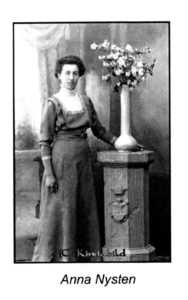 “Not my time to die”
“Not my time to die”
During “Afternoon Tea on the Titanic,” Setterdahl (a native Swede herself) also detailed the life of 22-year-old Anna Nysten, the woman whose story provided the title for Setterdahl’s book.
Nysten had planned to leave Sweden in the summer of 1912 to visit her sister Klara in Passaic, New Jersey. However, some of Nysten’s friends who were headed to America that spring persuaded her to go with them. Nysten traveled with the Andersson family from Kisa, Sweden, and the Danbom family from Stanton, Iowa. Nysten would be the lone survivor of the 11-member group.
“I can hardly describe how it happened,” Nysten wrote to her parents in the wake of the Titanic disaster. “There was terrible screaming and groaning, but you and I ought to thank God that I am alive. I managed to get into a lifeboat because I don’t think it was my time to die. I’m supposed to experience more of the world.”
Nysten offered more details of the disaster after Titanic struck the iceberg (as documented in Not My Time to Die, pages 167-169).
“There was a terrible jolt, so we nearly fell out of bed. But then they said it was not serious, so the passengers calmed down until the ship began to sink and the deck was full of people.”
After someone took Nysten’s lifebelt and she began crying, a sailor gave her his life jacket. While her traveling companions proclaimed they would all go down together with the ship, a sailor pushed Nysten into a lifeboat.
“Oh, how terrible it was when everything went dark,” said Nysten, who recalled that her lifeboat could have held 63 people but only had about 40 passengers when it was lowered into the sea. “When the ship went down we were not far away and were almost sucked under.”
Nysten and the others in the lifeboat heard an awful rumbling noise as the great ship sank. They sat in the lifeboat from 1:30 a.m. to 6:30 a.m., but “fortunately the sea was calm,” she recalled.
“You can imagine how happy we were to see the steamer Carpathia close in on us and we could come aboard. They were so good to us.”
The survivors were given blankets, coffee and brandy (“as much as we wanted,” Nysten noted).
“But there was still much groaning and crying because most of us had lost a dear relative,” Nysten recalled. “Many became hysterical.”
In New York, Nysten was taken to the Swedish Immigrant Home, where she received $25 from the Women’s Relief Committee. Nysten spent three years in New York with friends and intended to return to Sweden, but when the Lusitania was torpedoed in 1915, she changed her mind. She came to Boone, Iowa, and moved to Des Moines in 1916, where she married Arvid Gustafson in 1917. The couple had three sons and were members of the First Lutheran Church in Des Moines.
Nysten was one of the few Titanic survivors who married, had children and was not reluctant to talk about her Titanic experience, although it took several years after the sinking before she was willing to share many of those haunting memories, Setterdahl noted. In 1937 on the 25th anniversary of the tragedy, Nysten said in a newspaper interview that she no longer dreamed about the disaster.
Nysten passed away March 28, 1977, and is buried in Resthaven Cemetery in West Des Moines.
“The lifeboats were all gone”
Some Swedes on the Titanic like Gunnar Tenglin were returning to their adopted home in Iowa. Tenglin, 25, had grown up in Sweden and emigrated to America around 1903 at age 16. He settled in Burlington, Iowa. Until he learned to speak English he worked with crews cutting ice on the Mississippi River. He learned English while working at the Horace Patterson farm.
Tenglin returned to Sweden in 1908 where he married his wife, Anna. A year after the couple’s son, Gunnar, was born in Stockholm in 1911, Tenglin made plans to return to Burlington. He acquired a third-class ticket to travel on Titanic. Tenglin considered third class on Titanic equal to first class on most other steamers, noted Setterdahl, who documents his story in Not My Time to Die, pages 191-194.
Late in the evening of April 14, 1912, Tenglin and his traveling companion, August Wennerstrom (a fellow Swede who would also survive the sinking) had come back from a party on board Titanic. Tenglin had just taken off his shoes and was preparing for bed when he felt a thud. He put his jacket on but left his shoes in his bunk and his lifejacket under his pillow. He never returned for them.
When he came up on deck, all the lifeboats were gone. An officer on deck engaged Tenglin as an interpreter since the Swede knew English. Tenglin thought that saved him, as noted in a 2012 Burlington Hawk Eye article, because he was still on deck translating the officer’s commands to other Swedes. Otherwise, he may have been below deck when the ship when down.
Tenglin, a tall man of medium build with light blue eyes and brown hair, provided specific details of that unforgettable night to the Burlington Daily Gazette in 1912:
“It looked to us as if we were doomed to perish with the ship when a collapsible lifeboat was discovered. This boat would hold about 50 people, and we had considerable trouble getting it loose from its fastenings. The boat was on the second deck, and the ship settled the question of its launching, as the water suddenly came up over the deck and the boat floated.”
The terror was far from over, though.
“There must have been 150 people swimming around or clinging to the boat, and we feared it would collapse or sink,” Tenglin said. “We had no oars or anything else to handle the boat and were at the mercy of the waves, but the sea was calm.”
There was no way to sit down, so the boats passengers stood up in knee-deep, ice-cold water. Basic survival instincts dominated the horrific scene.
“Those on the edges pushed the frantic people in the water back to their fates, it being feared they would doom us all,” Tenglin said.
A big Swede named Johnson was kept busy throwing corpses overboard, Tenglin added, since the survivors wanted to make the boat as light as possible to increase its buoyancy.
Tenglin and other passengers in Collapsible A were rescued by the Carpathia. When the ship arrived in New York, the American Red Cross and the Swedish American Society took pictures of the surviving immigrants and printed the images as picture postcards. Tenglin sent one of those postcards to his mother in Sweden, mailing it from Burlington on April 29, 1912.
Tenglin lived the rest of his life in Iowa, where he was joined by his wife and son who arrived from Sweden in 1913. Tenglin worked various jobs during his career, from the railroad to the local utility plant that supplied Burlington with gas. Tenglin passed away in 1974 at age 86 in Burlington and is buried in Aspen Grove Cemetery.
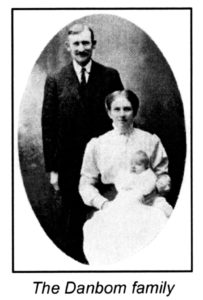 Immigrant recruiter buried in Stanton, Iowa
Immigrant recruiter buried in Stanton, Iowa
Other Swedes on board Titanic did not have the opportunity to live a long, full life. On pages 231-233 of Not My Time to Die, Setterdahl relates the sad fate of Ernest Danbom, a 34-year-old farmer and immigrant recruiter who was born and raised in Montgomery County, Iowa.
The son of two Swedish immigrants who farmed in southwest Iowa, Danbom married his wife, Anna, in 1910. The newlyweds traveled to Sweden for their honeymoon and remained with Anna’s family for a number of months. During this time, Anna gave birth to the couple’s son, Gilbert, in Kisa, Sweden, on November 16, 1911.
By April 1912, the young family prepared to return to America. Danbom also assumed the role of tour conductor for a group of 11 Swedes (including Anna Nysten and the Andersson family) who were traveling on Titanic.
As an immigrant recruiter, Danbom received a commission from each person he encouraged to come to America. Even after paying approximately $68 for a family cabin on Titanic, Danbom was carrying a substantial amount of money (including $276 in cash and $30 in gold) when he left Sweden, according to Not My Time to Die. He hoped that the money would help his family acquire a fruit farm in Turlock, California.
Tragically, none of the young family would survive the sinking of Titanic. Danbom’s wife and young son were lost at sea. Danbom’s body was recovered and brought to Halifax in Canada before being sent to Stanton, Iowa, for burial.
The Halifax coroner listed among his personal effects a black overcoat, dark suit, white pleated shirt, black boots, wedding ring marked “S.B.T.E.G.D., June 6, ’10,” gold watch and chain, knife, keys, opal and ruby ring, fountain pen, bracelet, ladies watch and chain, 3 memo books, solitaire diamond ring, scissors, U.S. naturalization papers, pocketbook, jewel case, and a check for $1,315.79, Security Bank, Sioux City.
Danbom is buried in the cemetery in Stanton. The inscription on his tombstone reads, “Ernest Danbom, 26 Oct 1877, died 15 April 1912, in Titanic disaster, his remains were recovered from the ocean. “Nearer My God to Thee.”
“No, I must be a gentleman”
In Cedar Rapids, attention focused on the well-known Douglas family, who endured an excruciating wait to learn the fate of Walter Douglas, 50, and his second wife, Mahala, first-class passengers on Titanic.
Walter Douglas was son of the founding partner of The Quaker Oats Company in Cedar Rapids. In 1903, Douglas and his brother George, founded the Douglas Starch Works, which produced cooking starch and oil, laundry starch, animal feed, soap stock and industrial starches.
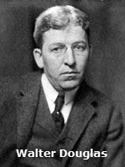 After celebrating Christmas 1911 with the Douglas family at the Brucemore mansion in Cedar Rapids, Walter and Mahala traveled to Europe for a three-month vacation to celebrate Walter’s retirement, according to Brucemore historic site and community cultural center, which has preserved this history. While in Europe, the couple also purchased furnishings for their mansion on a bluff overlooking Lake Minnetonka near Minneapolis, Minnesota.
After celebrating Christmas 1911 with the Douglas family at the Brucemore mansion in Cedar Rapids, Walter and Mahala traveled to Europe for a three-month vacation to celebrate Walter’s retirement, according to Brucemore historic site and community cultural center, which has preserved this history. While in Europe, the couple also purchased furnishings for their mansion on a bluff overlooking Lake Minnetonka near Minneapolis, Minnesota.
The couple bought first-class tickets for themselves and their French maid, Berthe Leroy, to return home aboard Titanic in time to celebrate Walter’s birthday on April 21 with family. First-class tickets on Titanic ranged from roughly $150 for a simple berth–about $3,600 today, based on current inflation tables, to $4,350 (more than $100,000) for one of the two Parlour suites.
On the night Titanic struck the iceberg, Walter and Mahala had just returned to their suite from the first-class dining room when they heard the engines stop. After Mahala asked Walter to find out what was going on, she donned her fur coat and boots to wait in the hallway. Seeing no officers and receiving no orders, Mahala grew concerned and returned to her cabin for a life preserver. Walter returned and teased her about the preserver, but agreed they should go on deck together. The couple watched as the distress rockets shot high into the air and burst into a shower of light.
Passengers on deck remained calm as they boarded the lifeboats. As Mahala climbed into a lifeboat, she requested that Walter join her. “No, I must be a gentleman,” he said before joining a group of men waiting for another lifeboat. Dressed in his tuxedo, Walter was last seen helping women and children into the final lifeboats.
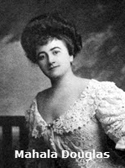 After Titanic sank, initial reports of the disaster were sparse and contradictory. The limits of wireless communication and the isolation of the disaster limited accurate information. When news of the tragedy reached Cedar Rapids, the magnitude of the disaster and the fate of Walter and Mahala were unknown.
After Titanic sank, initial reports of the disaster were sparse and contradictory. The limits of wireless communication and the isolation of the disaster limited accurate information. When news of the tragedy reached Cedar Rapids, the magnitude of the disaster and the fate of Walter and Mahala were unknown.
“The news of Titanic’s disaster came at noon while we were at luncheon,” noted an April 15 diary entry written by Irene Douglas, Walter’s sister-in-law who lived at Brucemore. “Did not seem serious until evening about 7:30 – spent the evening at the [Cedar Rapids] Republican [newspaper] office.”
Hearing no news, Irene and her husband, George, left Cedar Rapids on April 16 to meet the Carpathia, which was carrying Titanic survivors to New York. On April 17, the Cedar Rapids Evening Gazette reported:
“Up to 1 o’clock today no definite news had been received in Cedar Rapids concerning the fate of Mr. Walter D. Douglas…. The wireless telegraph companies having great trouble in effecting communication with the Carpathia…. It appears that a considerable number of the first and second cabin passengers, especially the men, must have perished, but it is still hoped that Mr. Douglas was among the ones rescued. Mrs. Douglas is on the Carpathia, but whether Mr. Douglas went down with the boat, as did many others of the male passengers, remains to be determined.”
On April 18, thousands of people waited in the rain in New York as the ship bearing approximately 700 Titanic survivors slowly approached the dock.
“Carpathia landed 7 in the eve.,” Irene noted in her diary. “Walter not with Mahala.”
Eight days after the sinking, the Douglas family received word on April 23 that Walter’s body had been recovered by the cable ship MacKay Bennett, the same ship that recovered the body of Wallace Hartley, whose seven-member band played as Titanic sank.
The Mackay-Bennett recovered 306 bodies near the scene of the sinking, including the body of Walt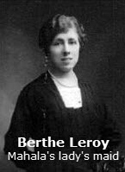 er Douglas, who was identified by his monogrammed shirt and cigarette case. The ship’s crew recorded the following information:
er Douglas, who was identified by his monogrammed shirt and cigarette case. The ship’s crew recorded the following information:
• No. 62 – MALE – Estimated age, 55 – Hair grey
• Clothing – Evening dress, with “W.D.D.” on shirt.
• Effects – Gold watch; chain; gold cigarette case “W.D.D.”; five gold studs; wedding ring on finger engraved “May 19th ’84”; pocket letter case with $551
(Interesting side note: The Mackay-Bennett was at sea working on a French trans-Atlantic cable when it got the charter from Titanic’s owners, White Star Line, to join the recovery efforts. After returning to Halifax, Nova Scotia, in Canada to pick up a hold full of ice to refrigerate bodies, 100 coffins, canvas sacks, an undertaker, and embalming fluids and equipment, the Mackay-Bennett headed out to sea to search for Titanic victims in a mission continually hampered by fog, heavy waves and wind. With its supply of coffins quickly filled and a steady stream of bodies being brought aboard by crewmen who went out in lifeboats, the Mackay-Bennett had to borrow canvas sacks and more embalming supplies from other recovery ships. The Mackay-Bennett buried at sea 116 of the 306 bodies it recovered, likely because they were not in good enough shape to be taken to Halifax. The ship took 190 victims to Halifax, where unclaimed bodies were buried in various cemeteries.)
Walter Douglas’ remains were taken first to his home in Minneapolis, then via a special train to Cedar Rapids for entombment in the Douglas family vault at Oak Hill Cemetery.
Mahala returned to her home on Lake Minnetonka, accompanied only by her maid, Berthe Leroy. An advocate of arts and culture, Mahala supported many local charities and made a donation in Walter’s name to Coe College in Cedar Rapids. A talented writer, Mahala published a collection of stories and poems in 1932. One copy, inscribed to George and Irene Douglas, is stored in the Brucemore archives. The last poem in the book is a haunting account of Titanic’s demise.
Titanic
The sea velvet smooth, blue-black,
The sky set thick with stars unbelievably brilliant.
The horizon a clean-cut circle.
The air motionless, cold – cold as death.
Boundless space.
A small boat waiting, waiting in this vast stillness,
Waiting heart-breakingly.
In the offing a vast ship, light streaming from her portholes.
Her prow on an incline.
Darkness comes to her suddenly.
The huge black hulk stands out in silhouette against the star-lit sky.
Silently the prow sinks deeper,
As if some Titan’s hand,
Inexorable as Fate,
Were drawing the great ship down to her death.
Slowly, slowly, with hardly a ripple
Of that velvet sea,
She sinks out of sight.
Then that vast emptiness
Was suddenly rent
With a terrifying sound.
It rose like a column of heavy smoke.
It was so strong, so imploring, so insistent
One thought it would even reach
The throne of grace on high.
Slowly it lost its force,
Thinned to a tiny wisp of sound,
Then to a pitiful whisper….
Silence.
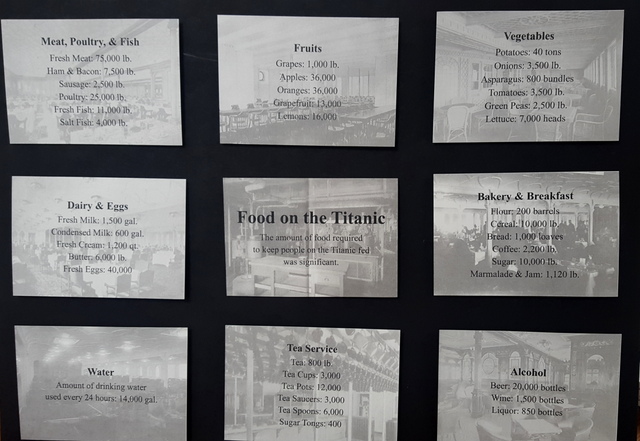 Food for thought as Titanic’s legacy lives on
Food for thought as Titanic’s legacy lives on
While more than 100 years have passed since Titanic plunged to the bottom of the sea, interest in the magnificent ship never wanes. In fact, Titanic II, a faithful replica of the doomed ship, is preparing for passengers by 2018.
The brainchild of Australian billionaire Clive Palmer, Titanic II will have practically the same dimensions of the original Titanic, which would be on the smaller side of modern cruise ships. (Shrewdly, the Titanic II will have more lifeboat capacity than the original ship.)
When Titanic II makes its maiden voyage from Jiangsu, China, to Dubai, no doubt it will offer exceptional meals, just as its predecessor did. The original Titanic’s provisions included 75,000 pounds of fresh meat, 11,000 pounds of fresh fish, 4,000 pounds of salted and dried fish, 7,500 pounds of bacon and ham, 40,000 fresh eggs, 40 tons of potatoes, 2,200 pounds of coffee, 10,000 pounds of sugar and 250 barrels of flour.
When I sampled an unforgettable taste of Titanic in Iowa City during the Johnson County Historical Society’s “Afternoon Tea on the Titanic,” one of my favorite menu items was the Victoria Sponge Cake.
“This cake is everyone’s favorite,” declares Penelope Carlevato in her book Tea on the Titanic: 100 Years Later. “No leftovers when you serve this cake.” I can see why, especially with this cake’s light texture and sweet filling that’s perfect with homemade jam (my favorite) or your best store-brought preserves.
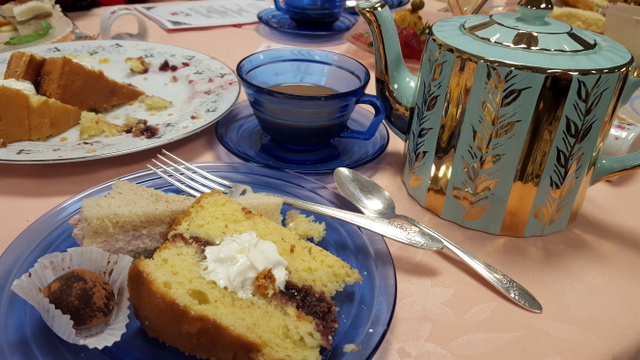
Victoria Sponge Cake served at the Johnson County Historical Society’s “Afternoon Tea on the Titanic” in Iowa City on April 2, 2017
Victoria Sponge Cake
Cake:
1 cup unsalted butter (at room temperature)
1 cup granulated sugar
4 eggs, beaten
2 cups self-rising flour, sifted flour
Filling:
1 cup jam, preserves or lemon curd (or whipping cream, if you desire)
Powdered sugar
Cream butter and sugar until light and fluffy. Add eggs and mix well. Grease and line two 8-inch round cake pans with parchment paper. Divide batter between the pans and smooth the tops for evenness.
Bake 20 to 25 minutes at 375 degrees Fahrenheit. Cool for 10 to 15 minutes in pans; then turn cakes out onto wire racks to continue cooling.
Place a paper doily on a footed cake plate. Sandwich bottoms of cake together with jam or preserves (strawberry preserves, raspberry preserves or apricot jam work well). Whipping cream could be substituted for the jam, if desired. Sprinkle top of cake with powdered sugar.
Decorate cake plate with chemical-free flowers such as violets or nasturtiums, if desired. (Wash the flowers well before use.)
Want more Iowa culture and history?
Read more of my blog posts if you want more Iowa stories, history and recipes, as well as tips to make you a better communicator.
If you’re hungry for more stories of Iowa history, check out my top-selling “Culinary History of Iowa: Sweet Corn, Pork Tenderloins, Maid-Rites and More” book from The History Press, as well as my Calhoun County” book from Arcadia Publishing, which showcases the history of small-town and rural Iowa. Order your signed copies today! Iowa postcards are available in my online store, too. Coming soon in September 2017–my third Iowa history book! Watch for more details on “Dallas County” from Arcadia Publishing.
P.S. Thanks for joining me. I’m glad you’re here.
@Copyright 2017 Darcy Maulsby & Co.
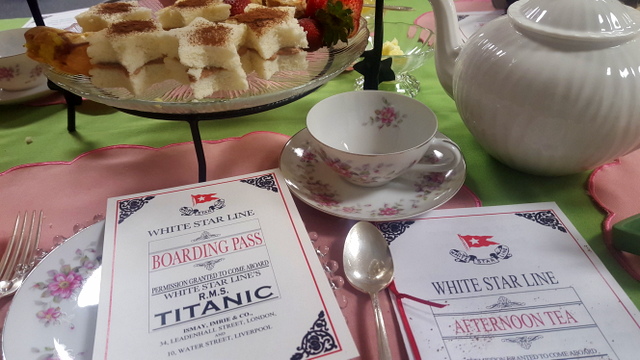

Leftover Ham? Make This Amazing Crustless Spinach and Ham Quiche
A ham for Easter dinner has been a tradition in my family for as long as I can remember. It’s no wonder, since I grew up on a farrow-to-finish hog farm in Calhoun County, Iowa. Ever wonder why ham became an Easter tradition?
In the days before refrigeration, hogs were harvested in the fall. The hams were preserved by curing (salting and/or smoking). This process took a long time, and the first hams were ready to eat in the spring. Ham, then, was a natural choice for the Easter celebration.
The National Pork Board recently conducted a Ham Research Study (wouldn’t you love that job?) and found that that 69 percent of Americans served ham for Easter dinner in 2016. Also, 55 percent of consumers enjoy ham as an everyday meal. I’m certainly one of them.
If you have leftover ham this Easter, why not power up your next meal with my Crustless Quiche? This recipe is incredibly simple, flavorful and packed with veggies and protein. What more could you ask for?
Crustless Spinach and Ham Quiche
1 tablespoon olive oil
1 cup chopped onion
1 cup sliced fresh mushrooms (or 2 cans sliced mushrooms)
Diced red and orange peppers, if desired
1 package (10 ounces) frozen chopped spinach, thawed and drained
1 cup chopped, fully cooked ham
5 large eggs
3 cups shredded Cheddar or Monterey Jack cheese
1/8 teaspoon fresh-ground pepper
In a large skillet, saute onion and mushrooms in oil until tender. Add spinach and ham; cook and stir until the excess moisture is evaporated. Cool slightly. Beat eggs; add cheese and mix well. Stir in spinach mixture and pepper; blend well. Spread evenly into a greased 9-in. pie plate or quiche dish. Bake at 350° for 40-45 minutes or until a knife inserted in center comes out clean. Yield: 8 servings. Enjoy!
Want more Iowa culture and history?
Read more of my blog posts if you want more Iowa stories, history and recipes, as well as tips to make you a better communicator.
If you’re hungry for more stories of Iowa history, check out my top-selling “Culinary History of Iowa: Sweet Corn, Pork Tenderloins, Maid-Rites and More” book from The History Press, as well as my Calhoun County” book from Arcadia Publishing, which showcases the history of small-town and rural Iowa. Order your signed copies today! Iowa postcards are available in my online store, too.
P.S. Thanks for joining me. I’m glad you’re here.
@Copyright 2017 Darcy Maulsby & Co.
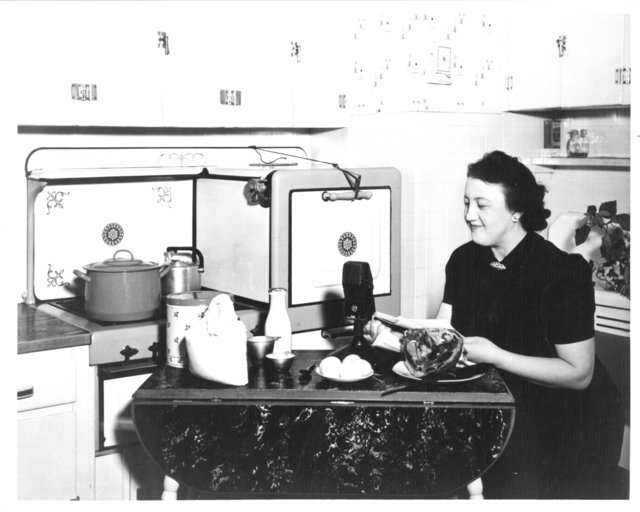
Cooking with Iowa’s Radio Homemakers
Long before there was Martha Stewart, there were KMA’s radio homemakers. These creative, talented ladies from southwest Iowa revolutionized women’s roles far beyond their humble farm kitchens starting in the 1920s. As they delighted Midwestern audiences by sharing their favorite recipes and providing down-home, daily visits with their radio friends, some of the women also became successful entrepreneurs along the way.
Their story begins in the early 1920s with the debut of a fabulous new invention called radio. In 1925, when a local businessman named Earl May began broadcasting KMA Radio-960 from Shenandoah, Iowa, to promote his seed and garden business. The station gained a following by airing practical information designed to help with the day-to-day life in Midwestern farm kitchens.
Before long, KMA was a trusted friend throughout the wide listening area, offering inspiration, companionship, and all manners of domestic counsel. The power of this connection can’t be understated when you consider the era—a time when farm wives were much more isolated than today due to poor roads, limited social opportunities and long days filled with endless chores.
A roster of personable, lively women who quickly became known as the KMA Radio Homemakers hosted KMA’s daily radio programs, including the Home Hour, the Stitch and Chat Club, and the KMA Party Line, while live cooking demonstrations drew thousands to the KMA auditorium in Shenandoah.
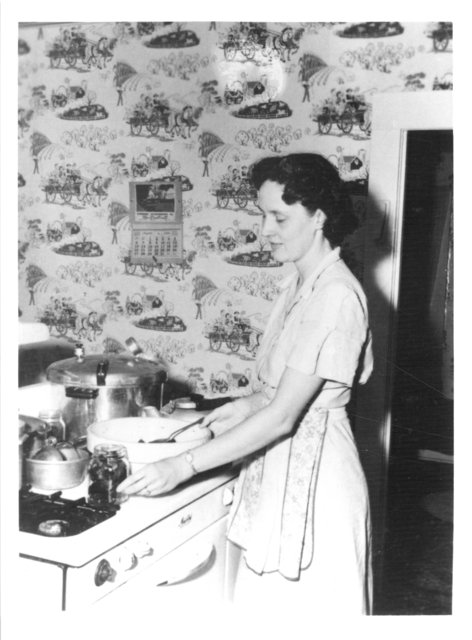
Evelyn Birkby was one of the beloved radio homemakers from southwest Iowa.
Broadcasts reached across the Midwest
The radio homemakers’ history is also linked to Earl May’s local competitor, Henry Field, another nursery and garden entrepreneur who seized on the power of radio to help expand his business. Field recruited family members to go on the air, including his sister, Leanna Field Driftmier, who began broadcasting “The Mother’s Hour,” which became “Kitchen Klatter.” Without any training, Leanna sat down at the microphone and just started talking about her home, family, recipes, household tips, advice for child- rearing and whatever news seemed worth sharing during the afternoon show.
In 1930, Leanna broke her back in a car accident but wanted to continue her show, despite her injuries. The radio equipment was brought to her home, and she broadcast from her bed and later from her kitchen table. The show became so popular amongst listeners that it was eventually was broadcast in six Midwestern states.
Neighboring on the air
As the radio homemakers’ concept gained momentum, local farm women like Evelyn Birkby began broadcasting from their kitchens in the 1950s. In her show “Down a Country Lane” on KMA Radio, Birkby would discuss her family and share snippets from her daily life, as well as offer suggestions for making the home a more pleasant place to live. Birkby called this phenomenon “neighboring on the air,” and it met a vital need when farm life could often be isolating.
Fans would follow the doings of favorite homemakers for years, tuning in each day the same way they’d listen to episodes of radio soap operas. Of course, recipes figured prominently in the broadcasts, with old-fashioned, Midwestern fare focused on meat and potatoes, hearty casseroles, cakes, pies, cookies and more.
Kitchen Klatter became home-grown success
Through the years, a line of Kitchen Klatter products (including food flavorings, bleach and more) was developed and sold over the radio by broadcasters like Leanna Driftmier. In addition, a monthly Kitchen Klatter magazine was circulated to thousands of Midwestern readers who enjoyed the articles, letters and recipes like Company Ham and Potatoes, Emerald Mint Sauce (made from Kitchen Klatter Mint Flavoring), Mary’s Pineapple Pie and Grandma’s Oatmeal Cookies. The Kitchen Klatter enterprise and the radio homemakers endured for a number of years, with some of the broadcasts lasting until the 1990s.
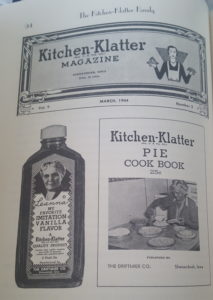 Recipes preserve a taste of Iowa history
Recipes preserve a taste of Iowa history
In 1991, Evelyn Birkby published the fascinating book “Neighboring on the Air,” where you can almost hear the voices of the KMA homemakers while you get a taste of their philosophy of life and sample their recipes. You can learn how to make hearty Midwestern fare ranging from Sour Cream Apple Pie from Florence Falk, “The Farmer’s Wife,” to Six-Layer Washday Dinner from Doris Murphy, who took to the air in 1949 with her “Party Line” broadcast.
You’ll get a sense what a grueling schedule the radio homemakers often endured as they broadcast radio shows out of their kitchen while their own family life went on about them. These ladies also knew the needs and interests of their audience, because they, too, were well acquainted with hard work, hard times and making do.
Through it all, the radio homemakers were Martha Stewart and Dear Abby all rolled into one as they shared news about their children, home beautification tips and their trusted recipes. Thousands of devoted listeners depended on them for weekly entertainment, information, humor and continuity. These listeners considered the radio homemakers a valued part of their lives, which is reflected in the longevity of the radio shows. The radio homemakers’ remarkable contributions are an enduring legacy to power of Iowa farm women and add unforgettable flavor to Iowa’s rich culinary heritage.
Six-Layer Washday Dinner
Like today’s busy working women, Iowa’s radio homemakers like Doris Murphy knew the value of being able to put a hearty, nutritious meal on the table without a lot of fuss. No doubt her recipe featured home-grown and home-canned vegetables.
2 cups hamburger
1 small onion, chopped
2 cups diced potatoes, raw
½ cup uncooked rice
1 cup sweet peppers, cut fine
1 cup diced carrots, raw
1 pint tomatoes
Brown hamburger and onion together. Combine meat, onion, potatoes, rice, peppers, carrots and tomatoes. Season with salt and pepper. Cover with water. Cook 2 hours in 350-degree oven.
Want more Iowa culture and history?
Read more of my blog posts if you want more Iowa stories, history and recipes, as well as tips to make you a better communicator.
If you’re hungry for more stories of Iowa history, check out my top-selling “Culinary History of Iowa: Sweet Corn, Pork Tenderloins, Maid-Rites and More” book from The History Press, as well as my Calhoun County” book from Arcadia Publishing, which showcases the history of small-town and rural Iowa. Order your signed copies today! Iowa postcards are available in my online store, too.
P.S. Thanks for joining me. I’m glad you’re here.
@Copyright 2017 Darcy Maulsby & Co.
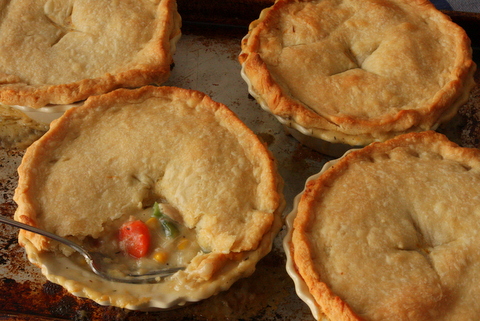
Celebrating Pi Day in Iowa with Old-Fashioned Chicken Pot Pie
As a food writer, here’s my foolproof equation: Pi Day (3/14) + old-fashioned chicken pot pie = true Iowa comfort food. Foodies like me aren’t nearly as concerned about the ratio of the circumference of a circle to its diameter (which is approximately 3.14159), UNLESS that pie is either a sweet or savory creation. Check out my recipe for Old-Fashioned Chicken Pot Pie (it’s what’s on the menu for lunch at the farm today!), including a recipe for the easiest—and tastiest—homemade pie crust.
I tip my hat to my friend Marlene (Lasher) Glasnapp of Lytton, Iowa, for the fantastic, lard-based pie crust recipe I’ve included below the pot-pie recipe. When you compare notes with an experienced farm cook like Marlene, don’t be surprised if you find new ways to break the “rules” of pie baking outlined in the cookbooks.
“I don’t use ice water when I make my pie crusts, and I prefer old-fashioned enameled pie tins to other types of pie dishes,” says Marelene, who grew up on a farm near Lake City and lives with her husband, Roger, on their farm south of Lytton. “Basically, I try to keep things as simple as possible.”
That includes sticking with tried-and-true favorites, such as her mother’s flavorful lard pie crust recipe, which Marlene has relied on for more than 60 years. I love this pie crust for three big reasons, including 1) it’s so easy, 2) it tastes great, and 3) lard-based crusts are one of the most forgiving, easy-to-work with pie pastries I’ve encountered.
Enough talk–let’s cook!
Old-Fashioned Chicken Pot Pie
This recipe is hearty, filling and makes enough for two 9-inch pot pies. If you’re not feeding a crowd, this freezes well.
2 cups diced potatoes
2 cups sliced carrots
1 cup butter
1 cup chopped onion
1 cup all-purpose flour
2 teaspoons salt
1 teaspoon dried thyme
3/4 teaspoon pepper
3 to 4 cups chicken broth
1-1/2 cups milk
4 cups cubed cooked chicken
1 cup frozen green beans
1 cup whole-kernel corn
Pie crust (either 2 packages of refrigerated pie pastry or homemade pie crust—see recipe below)
Preheat oven to 425 degrees Fahrenheit. Place potatoes and carrots in a large saucepan; add water to cover. Bring to a boil. Reduce heat; cook, covered, 8-10 minutes or until crisp-tender; drain. (I save the vegetable broth for future cooking adventures.)
In a large skillet, heat butter over medium-high heat. Add onion; cook and stir until tender. Stir in flour and seasonings until blended. Gradually stir in broth and milk. Bring to a boil, stirring constantly; cook and stir 2 minutes or until thickened. Stir in chicken, green beans, corn and potato mixture; remove from heat.
Roll out your homemade pie crust, and cut the dough into a circle big enough to cover your pie plate. OR, unroll a pre-made pastry sheet into each of two 9-in. pie plates; trim even with rims. Add chicken mixture. Unroll remaining pastry; place over filling. Trim, seal and flute edges. Cut slits in tops.
Bake 35-40 minutes or until crust is lightly browned. Let stand 15 minutes before cutting.
Freeze option: Cover and freeze unbaked pies. To use, remove from freezer 30 minutes before baking (do not thaw). Preheat oven to 425°. Place pies on baking sheets; cover edges loosely with foil. Bake 30 minutes. Reduce oven setting to 350°; bake 70-80 minutes longer or until crust is golden brown and a thermometer inserted in center reads 165°. Yield: 2 potpies (8 servings each).
World’s Best Pie Crust
For more than 60 years, my friend Marlene Glasnapp has relied on this classic Iowa recipe, which yields up to 6 crusts per batch.
5 cups flour
1 teaspoon salt
1 pound lard
1 cup water
Combine flour and salt. Cut lard into the flour mixture. Add water, a little at a time, mixing quickly and evenly until dough just holds together in a ball. Divide dough for six crusts. (The crusts can be frozen for later use, and Marlene often rolls hers out before freezing.)
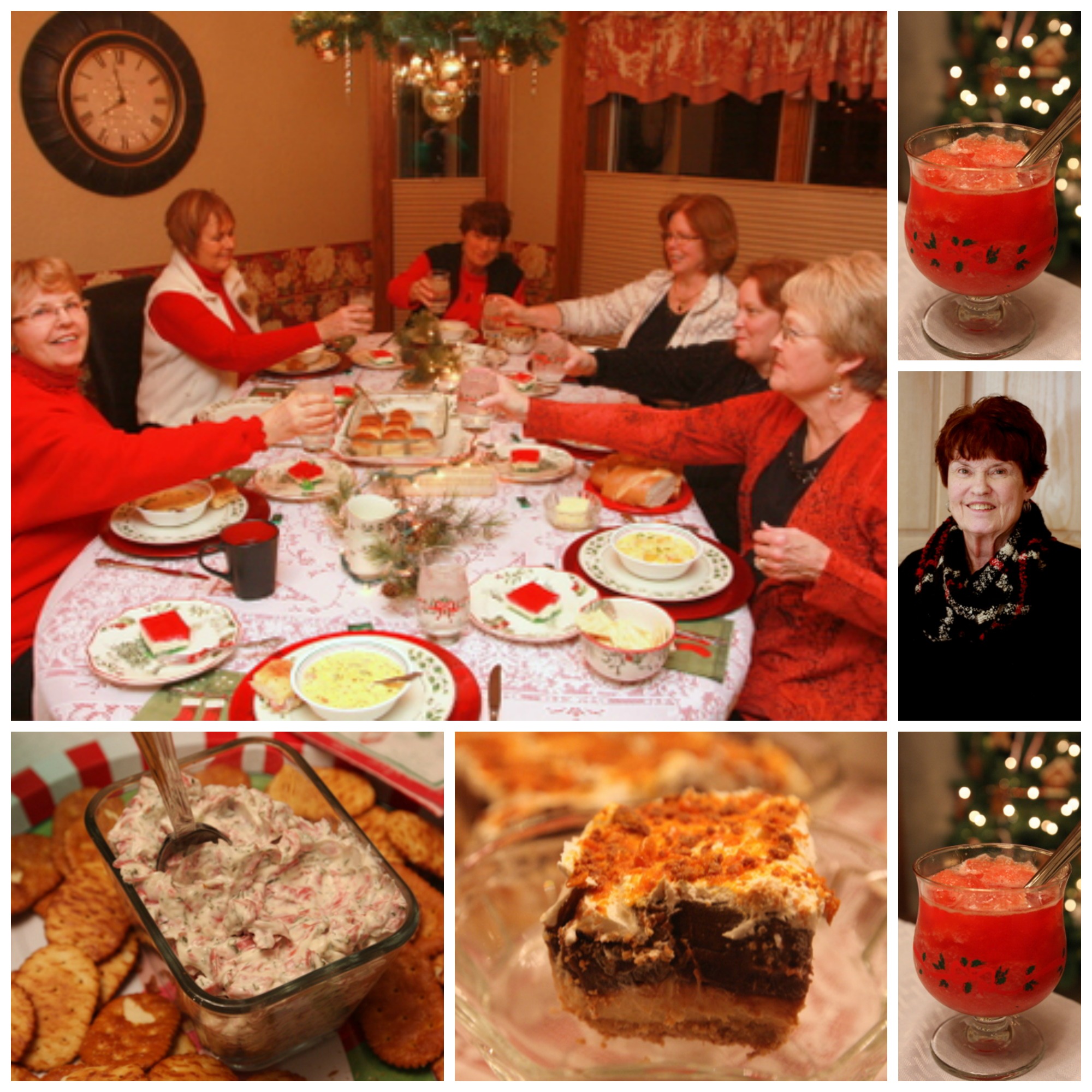
Shakespeare Club Maintains 123 Years of Good Taste in Small-Town Iowa
While one of Lake City’s oldest clubs likely wouldn’t have had any farm women for members when the group formed the 1890s, a farm wife (who is also my mom) is now the club’s president and has belonged to the group longer than any other member.

Jan Dougherty, Shakespeare Club president
“This was originally a very formal club where the ladies in town served white-tablecloth-style dinners and used their good china and silverware,” said Jan Dougherty of Lake City, president, who joined the Shakespeare Club in 1972. “Now we’re much more relaxed and just like to have fun.”
Part of the fun involves cooking classes, preparing homemade treats for the “lunch” following the meeting and sharing recipes. The group has visited Sweet Things Bakery in Lake City and recently enjoyed a cooking class taught by Robin Qualy of Lake City, who runs La Casa Cuisine and teaches people how to make homemade pasta and more.
“I like the camaraderie and enjoy getting to know people better through Shakespeare Club,” said Pam Feld of Lake City, who joined the group a few years ago.
Organized in 1894, the Shakespeare Club holds the honor of being the second oldest club in Lake City. It was organized by four young women interested in their social and intellectual advancement. Programs were arranged to study the lives and works of famous authors, although the greater part of each year was devoted to the works of Shakespeare. Later, the programs were diversified to include the study of music and the arts, as well as the cultures of Europe and South America.
During World War 1, Shakespeare Club members held benefit teas and auctions to raise money for the Red Cross. In the 1920s, a three-day celebration was held to commemorate the club’s silver anniversary. Parties, picnics, and a presentation of a picture to the library were part of the festivities. “The Shakespeare Club is famous for doing things right,” quoted the Lake City Graphic newspaper in 1923.
Through the years, club members have been instrumental in supporting the progress of schools and the local library, as well as civic improvements. As it has for years, the group continues to meet in members’ homes, and each meeting includes a program or special activity and ends with a luncheon.
“I like meeting in people’s homes,” said Pat Albright of Lake City. “It’s a comfortable feeling where we can be ourselves and enjoy each other’s company.”
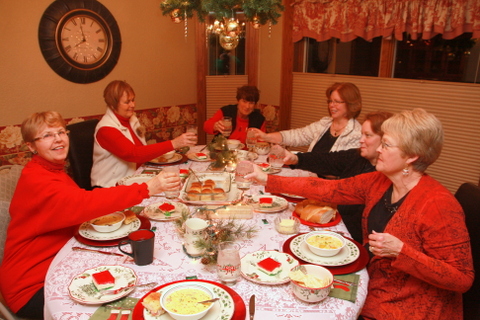
Members of Lake City’s Shakespeare Club enjoy homemade food and lots of laughs during this holiday celebration at Jan McClue’s home.
This also appeals to Jan McClue, who hosted the group’s 2016 Christmas party at her home near Lanesboro. “I like that we’re a group for fun, and I enjoy the interesting outings we go on around the area.”
One of the group’s favorite destinations is Studio Fusion in Fort Dodge, where members design their own glass picture frames, dishes, jewelry and more. No matter where they meet, however, snacks and homemade treats are always on the agenda. “Good food has always been part of Shakespeare Club, and I think it’s neat the club has lasted all these years,” Dougherty said. “Our motto could be, ‘We don’t meet if we don’t eat.’”

Darcy’s Corn Tortellini
Healthy Tortellini Corn Chowder
Smoky bacon combines with tender cheese tortellini for a creamy and comforting take on the usual corn chowder, which is one of my favorite soup recipes. I served it at the Shakespeare Club’s 2016 Christmas party at Jan McClue’s home near Lanesboro.
5 slices bacon
1 large onion, chopped
2 ribs celery, chopped
1 cup red, orange, yellow peppers, diced
2 cups fresh, canned or frozen corn kernels (about one and a half cans of canned corn)
2 cups chicken broth
1 cup sliced carrots
⅓ c unbleached or all-purpose flour or Wondra flour
3 cups 1% milk
⅓ cup chopped fresh basil, or 1 teaspoon dried basil
½ teaspoon salt
¼ teaspoon fresh ground pepper
8 ounces low-fat fresh or frozen cheese tortellini, cooked and drained
1 cup frozen green beans
1 to 2 cups diced ham, optional
Set a Dutch oven over medium heat. Add the bacon. Cook for 1 minute, or until it releases some of its moisture. Add the onion, celery, and bell peppers. Cook for 5 minutes, or until the vegetables are soft. Add the corn, broth and carrots. Bring to a boil over high heat. Reduce the heat to medium. Simmer for 15 minutes.
Place the flour in a medium bowl. Gradually add the milk, whisking until smooth. Pour mixture into the Dutch oven. Stir until well-blended. Add the basil, salt and pepper. Cook, stirring occasionally, for 3 minutes, or until the soup thickens. Add the tortellini, green beans and ham, if desired. Cook for 2 minutes, or until heated through.
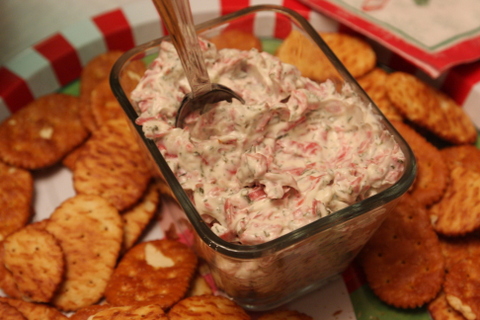
Jan McClue’s Beef Dill Dip
Beef Dill Dip
This tasty dip from Jan McClue is simple to make and can be served with bagel wedges or crackers.
1 16-ounce carton sour cream
2 tablespoons parsley
2 teaspoons Accent seasoning
2 packages dried beef, chopped
1 1 / 2 cup Miracle Whip
2 teaspoons dill weed
1 medium onion, finely chopped
Mix all ingredients together. Serve with crackers or bagel wedges.
Cheesy Artichoke Dip
This three-ingredient appetizer from Jan Dougherty of Lake City takes only minutes to make.
1 package cream cheese
1 can artichoke hearts, drained
2 cups shredded mozzarella cheese
Combine all ingredients. Bake at 350 degrees, or until top of the dip lightly browns.

Celebration Slush is oh-so-tasty!
Celebration Slush
This simple slush from Jan McClue, a Shakespeare Club member who lives on a farm near Lanesboro, makes any party more festive.
12 ounces frozen lemonade
12 ounces frozen limeade
1 1 /2 quarts cranberry-apple juice
1 / 2 cup granulated sugar
2 cups strawberry schnapps
2 cups water
Combine all ingredients and freeze in a plastic container, like an ice cream bucket. To serve, add a splash of lemon-lime soda pop, raspberry vodka or strawberry daiquiri.
Taco Soup
This flavorful soup from Marie Schwarm of Lake City is sure to please on a cold winter day.
1 pound of ground beef (cooked and drained)
1 can of corn 1 can great northern beans
1 can black beans
1 can red beans
1 medium size can of diced tomatoes
1 packet of Hidden Valley dressing mix
1 packet of taco seasoning
1 cup of water
Tortilla chips
Sour cream
Shredded cheese
Combine all ingredients in crockpot (do not drain the beans) except tortilla chips, sour cream and cheese. Cook on low for 6 to 8 hours. Serve with chips, sour cream and cheese. To spice up the soup, add a small can of diced green peppers.
Chili Bean Salad
This fresh, healthy recipe comes from Sharon Richardson of Lake City.
1 15-ounce can chili beans, heated Chopped tomatoes
Fresh spinach or lettuce, chopped
Corn chips
Make a bed of fresh spinach or chopped lettuce on plate. Top with chopped tomatoes and chili beans that have been heated. Top with crushed corn chips.
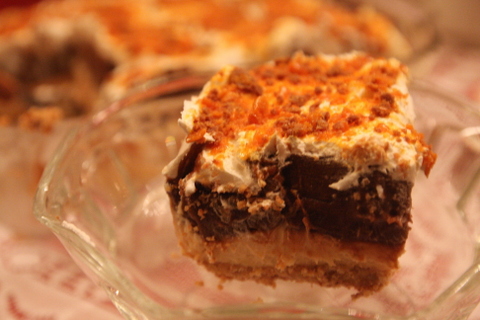
This luscious, rich dessert is a sweet symphony of creamy goodness.
Peanut Butter Dessert
This creamy, sweet Peanut Butter Dessert from Shakespeare Club member Pam Feld of Lake City offers an enticing ending for any meal.
For the crust:
1 cup finely-chopped cashews
1 cup all-purpose flour
1 / 2 cup butter
Cream cashews, flour and butter together. Press mixture into baking pan. Bake at 350 degrees for 25 to 28 minutes.
First layer of filling:
8 ounces cream cheese
1 / 3 cup creamy peanut butter
1 cup powdered sugar
1 cup whipped cream topping
Combine cream cheese, peanut butter, powdered sugar and whipped cream topping. Spread over cooled crust.
Second layer of filling:
2 2 / 3 cups milk
1 package chocolate instant pudding
1 package vanilla instant pudding
Combine milk and the two pudding mixes. Chill in refrigerator. When set, layer mixture on top of peanut butter layer.
Top dessert with whipped cream topping and pieces of chopped candy bars. Butterfinger and Heath work well.
Savor more Iowa food history
Want more great recipes and Iowa food stories? Check out my top-selling “Culinary History of Iowa” book from The History Press, and order your signed copy today.
P.S. Thanks for joining me. I’m glad you’re here.
@Copyright 2017 Darcy Maulsby & Co.

Is This Iowa’s Favorite Appetizer?
Who would have thought pickle wraps (a.k.a. pickle roll-ups) would be the hot food topic this holiday season? Of course, you don’t need a holiday to celebrate if you want to enjoy some “Iowa sushi,” as I explained to Des Moines Register reporter Courtney Crowder recently.
Here’s the great article from Courtney, along with my take on why pickle wraps are so undeniably Iowan (along with recipes, of course!)
Is This Iowa’s Favorite Appetizer?
Courtney Crowder , ccrowder@dmreg.com8:28 a.m. CST December 15, 2016
http://www.desmoinesregister.com/story/entertainment/dining/2016/12/14/iowas-favorite-appetizer/94676550/
My obsession with “Holiday Pickle Wraps” — also known as “Iowa Sushi” or “Lutheran Sushi” — began with a Facebook post.
Just before Thanksgiving, fellow reporter John Naughton posted a picture of a Hy-Vee display replete with cream cheese, pickles, dried beef and a sign noting that it was time for “Holiday Pickle Wraps.” Above the photo he wrote, “Sure sign you’re in Iowa.”
To me, the sign and its gathered foodstuffs might as well have been in a foreign language. Pickle wraps? Naughton’s post should have read: “A sure sign you’re not from Iowa.”
After living in the Hawkeye State for two years, I like to think I have at least a passing grasp on what is Iowan, but here I was simply gobsmacked by pickle wraps. What exactly are pickle wraps? Are these truly Iowan or just a quick appetizer Iowans are co-opting? And, most importantly, aren’t they incredibly salty?
“No, they’re not overly salty,” I was assured by Darcy Maulsby, lifelong Iowan and author of “A Culinary History of Iowa: Sweet Corn, Pork Tenderloins, Maid-Rites & More.”
“Pickle wraps are very, very popular in Iowa,” Maulsby added. “So many friends say pickle wraps are the first thing on the appetizer tray to go at their parties.”
Traditionally, a pickle wrap begins with a pickle (obviously), which is then slathered in cream cheese, wrapped in ham and cut into bite-sized pieces. However, there are variations on the general pickle wrap theme, Maulsby said. Some people sheathe the ham with a tortilla and others don’t use ham at all, instead opting for a dried beef encasement. Others make pickle wrap dip, where all the indigents of a pickle wrap are blended together and served with crackers.
“This is definitely a Midwestern thing,” Maulsby said. “You go to Arizona, Oklahoma, California, Michigan, they’ve never heard of a pickle wrap. Some Wisconsin and Minnesota people do know about pickle wraps, but I think Iowans should embrace this as our own, for sure.”
The exact genesis of the pickle wrap — or pickle roll-up as it is also called — is unknown, but Maulsby said the appetizer most likely originated as a modification of an old-world German recipe.
“I think of this as being in the same category as the fried breaded pork tenderloin, as far as its German-ness goes,” she said. “Anytime you have a German community or a place with a strong German heritage, you got pickles and red meat and that is two-thirds of a pickle wrap right there.”
As with its origins, the enduring legacy of the pickle wrap is up for grabs as well. So what is it that keeps Iowans coming back to the simplest of hors d’oeuvres?
“It’s the pickle wrap’s flavor sensation, and it’s a texture thing, too,” Maulsby said. “It does everything a good food should do: It’s interesting to the palate. The tang of the pickle plays nicely off of the smooth cream cheese and salty meat. The crunch of the pickle is in contrast to the creaminess of the cream cheese. As a food, it does so many things well.”
The best thing about the pickle wrap is that it is soeasy to make that even I, a cooking novice, feel confident in my abilities to master the roll-up. Simply slather, wrap and cut. But Maulsby urges chefs not to rest on their pickle wrap laurels, but to attempt their own variation on the classic roll-up. Take something conventional and make it your own!
“There are a lot of fun things you could do with pickle wraps,” Maulsby said, “and no one is going to get too worked up if you tweak the classic roll-up — at least I don’t think they will.”
Pickle wrap recipes
Here are culinary historian Darcy Maulsby’s favorite pickle wrap and pickle wrap dip recipes. To learn more about her work and other classically Iowan foodstuffs, check out her website at Darcymaulsby.com.
Classic Iowa pickle wraps
1 jar dill pickles
Ham slices
Cream cheese, softened
Lay the ham slices flat on a serving plate and pat dry. Spread with cream cheese. Place a pickle spear at one end of each slice and roll the slices into cylinders around the spears. Secure with toothpicks. Chill in refrigerator. Cut into bite-sized pieces.
Tortilla pickle-ham rolls
1 (32 ounce) jar dill pickles
1 (8 ounce) package cream cheese, softened and divided (make certain that the cream cheese is very soft for spreading)
1 pinch garlic powder, to taste (optional)
1 pound sliced cooked ham (I like to use honey ham)
6-inch flour tortillas
Mix the softened cream cheese with garlic powder (if using). Spread a thin layer of the cream cheese onto one side of a tortilla. Place 1 slice of ham over the cream cheese. Spread another layer of cream cheese over the ham. Roll a pickle up in the tortilla. Cover the roll with plastic wrap and chill for 2 hours (to make slicing easier). Remove the plastic wrap. Using a serrated knife, slice the roll into about 1-inch pieces or to desired size.

Dried beef pickle dip
1 package (3 ounces) dried beef, finely chopped
1 package (8 ounces) regular or reduced fat cream cheese
1/2 cup reduced fat sour cream
2 tablespoons chopped green onion
1/2 to 1 cup coarsely chopped dill pickles (not dill relish)
1/4 teaspoon pepper
Soften cream cheese and combine with remaining ingredients. Chill until serving. Serve with crackers or fresh vegetables.
— Dip recipe from the Iowa Beef Industry Council.
Savor more Iowa food history
Want more great recipes and Iowa food stories? Check out my top-selling “Culinary History of Iowa” book from The History Press, and order your signed copy today.
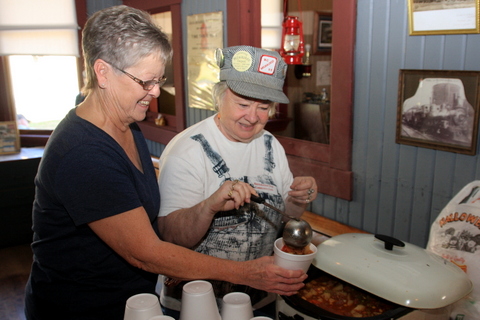
All Aboard! Rockwell City’s “Depot People” Offer a Taste of Iowa History
Eating like a hobo never tasted so good, at least when the “Depot People” are cooking. The savory aromas that emanate from the historic railroad depot in Rockwell City for one afternoon each fall signal that something good is coming down the line.
“I love this little museum and enjoy giving people a taste of the past,” said Carol Hupton of Rockwell City, president of the board of “Depot People” who have transformed the 1899 depot and freight shed into a museum.
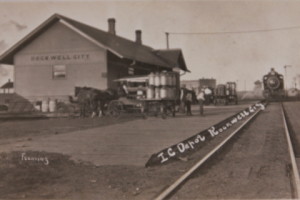
A train rolls into the Illinois Central Railroad depot in Rockwell City years ago.
During the annual fundraiser, which Hupton has helped with for the past six years, home cooking offers a feast at the Rockwell City depot a block north of the Calhoun County courthouse. Guests can dine on homemade hobo stew, hot dogs, homemade cookies, bars and more, with all proceeds going to restoration projects at the depot.
Saving the depot has been a labor of love for the Depot People, a group of about 25 people who want to preserve their community’s history. “There was a time when the depot was in danger of being torn down,” said Hupton, who has been volunteering with the depot museum for 10 years. “People don’t always realize the important role the railroad played to help Iowa and small towns like Rockwell City grow.”
The first railroad to arrive in Rockwell City was the Des Moines & Northern line, which was later taken over by the Chicago, Milwaukee & St. Paul Railway. The first passenger train rolled into town in 1881.
Rockwell City’s second railroad was the Illinois Central. Surveying the land between Fort Dodge and Rockwell City for this rail line began in 1899. Around 1903, the Newton and Northwestern Line, an interurban line, became the third rail line to Rockwell City. For decades, it brought passenger cars from Newton and Des Moines every two hours from 7 a.m. to 9 p.m.
During the heyday of the railroad, Rockwell City became a stop for multiple passenger trains and freight trains each day. Weary travelers could enjoy a meal at the nearby Hotel Brower or various restaurants in town.
In time, paved roads and interstate highways led to increased traffic from cars, pickup trucks and semi-trucks across Iowa and the nation, marking the end of an era for passenger trains. Railroad transportation itself changed as powerful diesel engines replaced the steam engines that once powered the many trains that rolled across the Iowa countryside. “Now the old depot here in town stands alone as a reminder of our history with the railroads,” Hupton said.
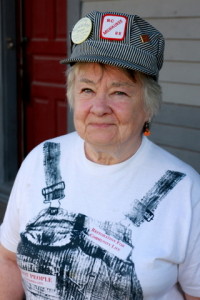 Sharing this history is important to Hupton and her fellow volunteers. The depot’s fundraising meal offers another way to encourage people of all ages to visit the museum. “Many kids don’t know anything about the history of the railroad in Rockwell City or other small Iowa towns,” Hupton said.
Sharing this history is important to Hupton and her fellow volunteers. The depot’s fundraising meal offers another way to encourage people of all ages to visit the museum. “Many kids don’t know anything about the history of the railroad in Rockwell City or other small Iowa towns,” Hupton said.
That’s why the Depot People have created historical exhibits in the depot, including vintage photos of the depot, to show the important role it once played in the community. A recreated hobo camp east of the freight shed also helps visitors learn how the railroad influenced people’s daily life in various ways.
The Depot People continue to apply for grants and host fundraisers with meals to preserve local railroad history. A summer car show allows car, truck and motorcycle fans to display their prized vehicles, while guests can dine on pulled pork sandwiches, potato chips, homemade desserts.
In the fall, the depot becomes an informal dining room where guests can enjoy a hearty bowl of homemade hobo stew, sugar cookies, salted nut roll bars and other goodies prepared by some of Rockwell City’s best cooks and depot supporters, including Maurine Zuetlau.
“Rockwell City’s depot is a landmark,” Hupton said. “We’ll continue to do what we can to preserve this local history.”
Savor more Iowa food history
Want more fun Iowa food stories and recipes? Check out my top-selling “Culinary History of Iowa” book from The History Press, and order your signed copy today.
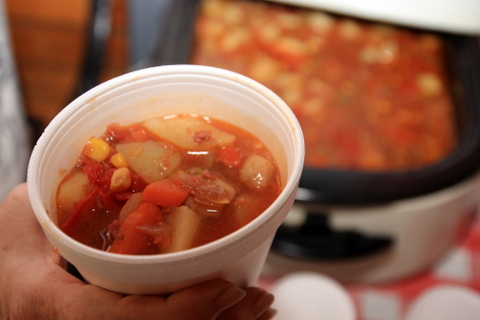
Hearty Hobo Stew from Iowa
Hearty Hobo Stew
4 pounds rump roast, cut up into cubes
Olive oil
2 cups diced celery
1 1 / 2 cups carrots, sliced
2 cups apple-cider vinegar
2 cups French onion condensed soup
3 to 4 cups potatoes, cubed and cooked
2 cans diced tomatoes
Beef stock (use as much as desired for the right consistency of stew)
Corn kernels, optional
Peas, optional
Brown the cubes of beef in olive oil. Combine beef with remaining ingredients. Place stew in roaster and cook until heated through.
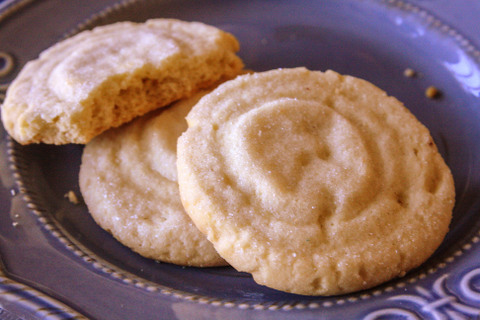
Homemade Sugar Cookies
World’s Best Sugar Cookies
These Amish sugar cookies come from Maurine Zuetlau of Rockwell City.
1 cup powdered sugar
1 cup granulated sugar
1 cup butter (can use half butter and half margarine)
1 cup vegetable oil
2 eggs
2 teaspoons vanilla
1 teaspoon salt
1 teaspoon cream of tartar
1 teaspoon baking soda
5 cups flour
Mix all ingredients. Roll dough into balls to form each cookie. Roll each dough ball in granulated sugar. Press down each ball with a glass dipped into granulated sugar. Bake cookies at 350 degrees for 13 to 15 minutes. Let cool on cookie sheet 2 to 3 minutes. Remove cookies and place on cooling rack.
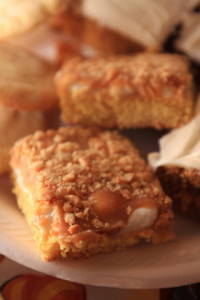
Salted Nut Roll Bars
Salted Nut Roll Bars
These tasty bars are reminiscent of salted nut roll candy bars and come from Maurine Zuetlau of Rockwell City.
1 package yellow cake mix
1 / 2 cup softened margarine
1 egg
3 cups mini marshmallows
2 / 3 cup white corn syrup
1 / 4 cup margarine
1 12-ounce package peanut butter chips
1 cup chopped, dry-roasted peanuts
Combine cake mix, 1 / 2 cup margarine and egg. Pat mixture into 9-inch by 13-inch pan. Bake at 350 degrees for 18 to 20 minutes. Cover bars with marshmallows. Return to oven for 2 to 3 minutes. (Marshmallows will puff up.) Cool.
Boil white corn syrup and 1 / 4 cup margarine. Remove from heat. Add peanut butter chips. Pour mixture over marshmallows and top with nuts. Cool completely, cut into bars.
P.S. Thanks for joining me. I’m glad you’re here.
@Copyright 2016 Darcy Maulsby & Co.
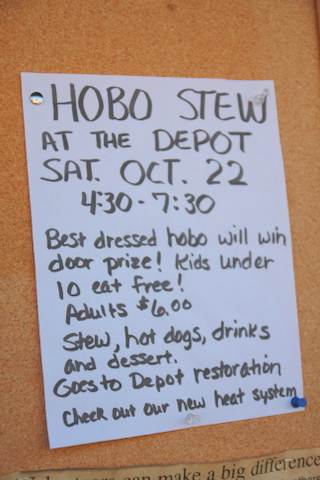
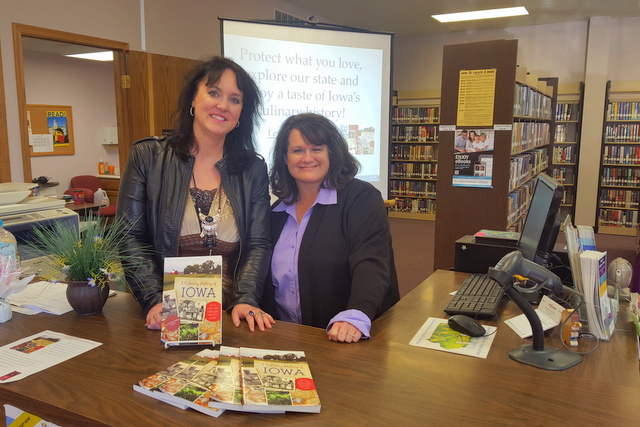
Iowa Eats! Why Radio Iowa, Newspapers and Libraries are Hungry for “A Culinary History of Iowa”
Everyone has an Iowa food story, even those doubters who sounded incredulous when I first proposed my idea for my “Culinary History of Iowa” book. Their amusement, followed by the inevitable question, “Iowa has a culinary history?” quickly dissolved into stories of Maid-Rites, potlucks and more.
The media, Iowa libraries and others across the state have really embraced these stories, too. I was honored to offer book programs and signings at the Ruthven Public Library and beautiful Kendall Young Public Library in Webster City. I was also pleased that the Webster City Freeman Journal ran a feature story on my book, at Pat Powers from KQWC Radio in Webster City interviewed me in a broadcast that has now popped up on Radio Iowa.
Need a fun read or a great gift idea? Click here to visit my online store, where you can purchase copies of “A Culinary History of Iowa,” a unique set of 15 vintage images from “A Culinary History of Iowa,” and my first book, “Calhoun County,” which shares the remarkable, illustrated history of small-town and rural Iowa through the eyes of those who lived it.
November 19th, 2016 by Ric Hanson
http://www.kjan.com/index.php?cat=3&paged=2
From pork tenderloins to sweet corn to Jell-o, a new book is out focused on Iowa foods and the flavors that make the state so delicious. The book, “A Culinary History of Iowa,” traces the popular tastes of Iowans through the years, according to author Darcy Dougherty Maulsby, of Lake City. “We do have great cuisine,” Maulsby says. “It’s funny. When the book came out, I had some people questioning, ‘Iowa has a culinary history?’ We sure do. I said, ‘Just starting thinking what defines Iowa food,’ and everybody always comes up with an answer.” Maulsby says she’s done research for the book by exploring all four corners of the state and everything in between.
“I’ve been working on it in bits and pieces for almost 20 years in my career as an ag journalist,” Maulsby says. “I’ve traveled the state and met with some of Iowa’s finest chefs and lots of great old-school farm cooks. I’ve seen the spectrum of really awesome Iowa food and it’s been so much fun to collect all of these stories and photos in one place.” Some might categorize it as a cook book but Maulsby says it’s more than that.
“It’s the story behind the things that define Iowa food,” Maulsby says. “Whether that’s Maid-Rites, Dutch letters from Pella, there’s so many fun stories, Laura Ingalls Wilder turns up in there, the Younkers Tea Room, all of these amazing traditions, meat lockers, sweet corn, all of the things that make Iowa food great.” Find the book at the Amazon and Barnes & Noble websites as well as at: www.darcymaulsby.com. (Radio Iowa)
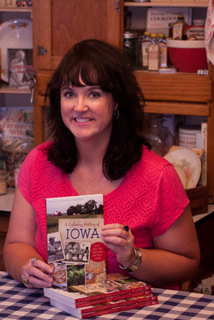
Darcy Maulsby is the author of “A Culinary History of Iowa,” which serves up stories, photos, recipes and more!
Iowa Eats: Maulsby pens book on the state’s culinary history
NOV 16, 2016
by ADRI SIETSTRA, Webster City Freeman Journal reporter
asietstra@freemanjournal.net
Author Darcy Maulsby will be bringing Iowa food stories to life during a free program Thursday evening at 6:30 p.m. at Kendall Young Library. The program will feature a cooking demonstration with book signing to follow.
“You’ll love this fun, fast-paced program filled with stories, rare vintage photos and surprising recipe tips. Be prepared to dig into the remarkable stories behind Iowa classics like Maid-Rites, breaded pork tenderloins, Iowans’ obsession with Jell-O, and our distinctive chili-and-cinnamon roll phenomenon,”said Maulsby. “I’ll also share practical, proven tips on how to preserve your own family’s history and food traditions.”
Maulsby, 43, is a self-described foodie and home cooking enthusiast from Lake City. She began baking and cooking in grade school while growing up on the farm. She entered many cooking contests at the Calhoun County Expo while a member of the Lake Creek Go-Getters 4-H Club.
“Food writing is a large part of my work as a small-business owner, freelance writer and marketing specialist who focuses on agriculture. I work with clients ranging from the National Pork Board to Farm News, where I often interview chefs and home cooks, create recipe pages and write feature stories that highlight the farm-to-fork connection,” said Maulsby.
In 2007, Maulsby completed the Master Food Preserver course through University of Illinois Extension. She earned her bachelor’s degree in journalism/mass communications and history from Iowa State University (ISU) and also earned her master’s degree in business administration from ISU.
Maulsby’s jams have won blue ribbons at the Iowa State Fair, and cookies have earned top honors at the Clay County Fair. She is also a certified Kansas City Barbecue Society judge.
Maulsby credits a variety of sources for the inspiration for her new book.
“The stories in “A Culinary History of Iowa” have come from the Iowa State Fair, as well as long-time restaurant owners, experienced farm cooks, candy shop owners and other foodies throughout Iowa,”Maulsby said.
Maulsby is excited to share some of Iowa’s culinary history with attendees Thursday evening.
“Everyone has a food story. Sometimes we don’t realize just how unique-and tantalizing-Iowa’s food traditions are. If you like to travel, you’ll walk away from this program inspired to explore Iowa, where you can sample flavors from around the globe without leaving the state,” said Maulsby. “If you have an appetite for adventure, you can’t do better than Iowa when it comes to history, agriculture and one-of-kind culinary experiences.”
Signed copies of her book “A Culinary History of Iowa” will be available for $24 a copy.
Celebrating great Iowa eats
LINDSAY ANDERSON, Kendall Young Librarian
 We Midwesterners are known far and wide for our excellent, down-home cuisine. Having only lived in Iowa for two years, I have already eaten enough to be amazed at Iowa’s particular brand of culinary delights.
We Midwesterners are known far and wide for our excellent, down-home cuisine. Having only lived in Iowa for two years, I have already eaten enough to be amazed at Iowa’s particular brand of culinary delights.
Have you ever wondered why Iowans cook – and eat – so well, and from where your signature recipes and food traditions originate? Iowa author and Lake City native, Darcy Maulsby, explores these and other food stories in her recently published book, Culinary History of Iowa. In it, she discusses everything from Maid-Rite classics to Iowan’s homemade cinnamon rolls (served with chili, of course). The Library is delighted to be hosting Maulsby at Kendall Young Library on Thursday, November 17 at 6:30pm for a presentation, book signing and cooking demonstration. Maulsby has been featured in the Iowa History Journal, Our Iowa magazine, Iowa Public Radio, and more. During Maulsby’s fun, interactive program, she will serve up fascinating tidbits related to more than 150 years of Iowa cuisine from all corners of the state. Attend this free event and discover how Iowa’s delectable cuisine is quintessentially Midwestern, grounded in its rich farming heritage and spiced with diverse ethnic influences.
On the Shelf
If all this talk of food has left you hungry, here are some titles that can help get some great, local Iowa eats cooking in your kitchen: The following cookbooks were recently added to the Library’s Genealogy Reference collection. While we do not allow these unique cookbooks to be checked out, you are welcome to browse them and make copies of any recipes that catch your eye.
The Famous Old Webster City Cook Book
Curated by The Ladies’ Aid Society of the Congregational Church in 1916, this cookbook boasts only “tried and tested” local recipes, including everything from waffles and pancakes, to salads and corn breads. A fun addition: the past page of this cookbook includes “Discoveries and Household Hints,” a delightful list of tips and tricks from some early 1900s kitchen experts.
4-H & Friends Cookbook
Assembled in honor of the Hamilton County 4-H program’s 70th anniversary in 1987, this nearly 400-page volume is painstakingly indexed, and boasts over 13 sections of recipes. Explore and discover some delightful gems; experiment with recipe choices ranging from “Shoo-Fly Cake” to “Gramma’s Hamburger Soup”.
St. Paul’s Lutheran Church Anniversary Cookbook
Compiled by the ALCW of St. Paul’s Lutheran Church of Williams, Iowa in 1987 to commemorate their 75th anniversary, this volume boasts more than 250 pages of hardy, time-tested eats that will satisfy your hunger and delight your taste buds. Try your hand at everything from “Buttermilk Cinnamon Bars,” to “Zucchini Date Pecan Loaf,” to “Highbrow Haddock.”
Try out these locally celebrated recipes for some delicious mealtime fun, and don’t forget to join us at the Library with Darcy Maulsby on Thursday, November 17 at 6:30pm for an unforgettable (not to mention delicious) journey into Iowa’s culinary past.
Order you copies today!
Click here to visit my online store, where you can purchase copies of “A Culinary History of Iowa,” a unique set of 15 vintage images from “A Culinary History of Iowa,” and my first book, “Calhoun County,” which shares the remarkable, illustrated history of small-town and rural Iowa through the eyes of those who lived it.
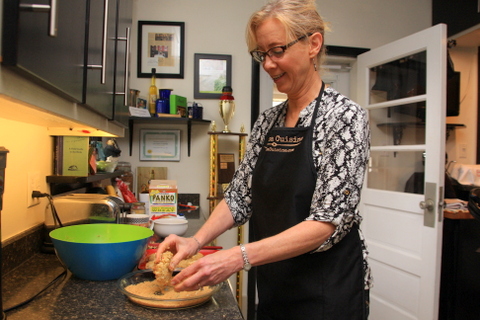
Rustic Cooking Refined: Iowan Robin Qualy Embraces Global Flavors
Call her a fusion of culinary creativity. While Robin Qualy has a strong German heritage, she loves Italian flavors. Although she didn’t care for home ec (now family and consumer sciences) classes during her school years in Lytton, Iowa, this self-taught cook loves to experiment in the kitchen. Most of all, she’s proud of her farm roots but takes a distinctly non-traditional approach to Iowa cooking.
It all started with a magnum of French champagne. “It was a gift from a client in Europe,” said Qualy, a court reporter who lives in Lake City, Iowa. “It sounded fun to have a crab fest with the champagne, so we did.”
The event evolved into a seafood fest with everything from clam chowder to crab cakes with remoulade (pronounced “rem-oo-laud”) sauce. “Finding Emeril Lagasse’s remoulade sauce recipe was a breakthrough,” Qualy said. “While it had 18 ingredients, it showed me why chefs’ food tastes so good, because everything is built up from all those layers of ingredients.”
This also inspired Qualy’s passion for showcasing global flavors. One of her favorite cookbooks is Marcella Hazan’s “Marcella Cucina,” which is filled with Italian recipes and interesting stories. Some of Qualy’s creations, including Pain D’Epi, a wheat-stalk bread inspired by French baguettes, can take on a variety of flavors, from Italian to Greek. This offers her customers options if Qualy happens to be selling her baked goods at the Lake City Farmers Market or the Clear Lake Farmers Market.
Qualy’s goal for this winter? Learn to prepare sushi. Through her part-time business, La Casa Cuisine, where she serves as an in-home guest chef, Qualy also enjoys sharing her best cooking tips, which include “reduce, reduce, reduce” to remove excess moisture and concentrate the flavors in sauces, “fresh, fresh, fresh” for everything from herbs to coffee beans, and “healthify” recipes by using more whole grains and vegetables, less sugar and healthier oils like olive oil.
By adding plenty of vegetables, Qualy “healthified” her chili recipe and took top honors in the 2016 Dell Blair Memorial Chili Cook-Off at Lake City’s fall festival this September. “This contest has been around for a number of years, so I knew I needed to offer something unique,” said Qualy, a first-time competitor. “Since there was no meat in the recipe, I used chipotle peppers in adobo sauce to add a hearty, smoky, spicy base.”
Sharing her culinary creations with friends and family is important to Qualy, who credits her mother, Marlene Glasnapp of Lytton, for inspiring a love of family, food, cooking and baking. Qualy’s advice to other home cooks? “Keep learning, and have fun refining your culinary techniques. Cooking is a skill you can use all your life.”
Savor more Iowa food history
Want more fun Iowa food stories and recipes? Check out my top-selling “Culinary History of Iowa” book from The History Press, and order your signed copy today.
 Championship Veggie Chili
Championship Veggie Chili
Robin Qualy’s unique chili won top honors in the 2016 Dell Blair Memorial Chili Cook-Off in Lake City this fall.
2 tablespoons canola oil
1 cup onion, diced
2 cups zucchini with skin, diced
1 / 2 cup red peppers, diced
1 / 2 cup yellow peppers, diced
1 / 2 cup orange pepper, diced
1 / 4 cup poblano or jalapeno pepper, diced (to taste)
2 teaspoons fresh garlic, minced
1/2 teaspoons salt
1/2 teaspoons black pepper
1 tablespoons cumin
2 tablespoons chili powder (to taste)
1 tablespoons sugar
1 box (32 ounces) unsalted vegetable stock (Qualy recommends the Kitchen Basics brand)
28-ounce can crushed tomatoes
28-ounce can garlic-celery-onion stewed tomatoes, diced or mashed
1 can green chilis, diced
2 tablespoons chipotle peppers in adobo sauce, diced
2 ears of sweet corn cut off cob, or 1 cup frozen corn, thawed
14-ounce can each white kidney, red kidney, and black beans – drained, rinsed, and mashed with potato masher
14-ounce can each white kidney, red kidney and black beans – drained and rinsed
In large pot, heat oil over medium heat. Add the onion and zucchini, cook about 5 min., then add peppers and garlic. Cook 5 more minutes. Add salt, pepper, cumin, chili powder and sugar. Cook until onion is translucent and zucchini is soft.
Pour in vegetable stock, crushed tomatoes, stewed tomatoes, green chilis and chipotle peppers in adobo sauce. Bring to boil, then reduce heat. Cover and simmer for 30 minutes. Add sweet corn, mashed beans and whole beans. Stir well; simmer another 30 minutes. Taste and adjust seasoning. Serve with shredded extra-sharp cheddar, snipped cilantro and blue corn chips. Ole! Ole! Ole! Yield: 1 gallon
 Crab Cakes with Remoulade Sauce
Crab Cakes with Remoulade Sauce
For the crab cakes:
2.5 cups crushed dry bread crumbs
3 6-ounce cans crab meat
1 / 3 cup salad dressing, Miracle Whip or mayo
1 / 2 cup red pepper, diced
2 stalks celery, diced
1 / 3 cup onion, diced
4 shakes of Louisiana hot pepper sauce (to taste)
2 teaspoons Old Bay seasoning
1.5 tablespoons lemon pepper seasoning
1 / 2 teaspoon salt
1 / 2 teaspoon black pepper
2 eggs
2 cups panko bread crumbs
Canola oil to generously coat surface of non-stick skillet
Combine bread crumbs, crab meat, salad dressing, red pepper, celery, onion, hot pepper sauce, Old Bay seasoning, lemon pepper, salt and black pepper. Taste test and adjust seasonings, as desired.
Add 2 eggs, lightly beaten. Form mixture into 10 2.5-inch patties. Firmly coat each crab cake with panko crumbs in pie plate. Heat canola oil until medium hot. Patties should sizzle when touching oil. Fry five patties at a time, 5 minutes per side, or until dark brown. Keep warm until serving with remoulade sauce on the side. Yield: 10 crab cakes
 Remoulade sauce
Remoulade sauce
1 cup salad dressing or Miracle Whip
1 / 4 cup ketchup
2 tablespoons extra virgin olive oil
2 tablespoons whole-grain mustard (such as whole-grain Dijon)
2 tablespoons horseradish
1 tablespoon Louisiana hot sauce
2 tablespoon lemon juice
2 tablespoons Worcestershire sauce
1 / 4 cup scallions (or regular onions), diced
1 / 3 cup celery, diced
1 / 2 teaspoon fresh garlic, minced
2 tablespoons fresh parsley, chopped
1 teaspoon Cajun seasoning
1 teaspoon Old Bay seasoning
1 teaspoon dill weed
1 / 2 teaspoon black pepper
2 teaspoons brown sugar
Blend all ingredients, using a blender or food processor with S-shaped chopping/blending blade. Pour into bowl, cover and refrigerate. Best when served at room temperature. Laissez les bons temps rouler! (Let the good times roll!)
Beef Asian Stir Fry
Brown sugar is a secret ingredient in this flavorful stir fry.
1 pound lean steak (charcoal steak is a good option), sliced thinly against the grain into 2-inch-long strips
1 / 3 cup teriyaki sauce (liquid)
2 tablespoons canola oil for stir-frying
2 cups carrots, sliced
1 / 2 cup red peppers, sliced
8 ounces baby bella (cremini) mushrooms (one box), sliced
1 / 3 cup onion, sliced fairly big
1 / 2 of a fresh jalapeno pepper, seeded and deveined, small dice
8 ounces pea pods (can also substitute fresh green beans or broccoli florets)
1 8-ounce can bamboo shoots
1 8-ounce can water chestnuts, sliced
1 can baby corn
1 / 2 teaspoon fresh garlic, minced
1 / 2 teaspoon fresh ginger, grated (keep fresh ginger in freezer)
1 beef & broccoli seasoning packet (usually found near the gravy mixes in the grocery store)
1 cup water
6 tablespoons low-sodium soy sauce
1 / 2 cup teriyaki baste & glaze (thick consistency)
1 tablespoon cornstarch
2 tablespoons brown sugar
Red pepper flakes, as desired, for heat
Chopped cilantro, as desired, for flavor
8 ounces spaghetti, cooked and drained, or cooked rice
Marinate sliced beef in teriyaki sauce for 30 minutes to 1 hour. Heat oil in wok or large skillet to medium high. Add beef and stir-fry until almost fully cooked. Remove and set aside.Add more oil if needed. Stir-fry carrots, red peppers, mushrooms, onion, jalapeno, pea pods, bamboo shoots, water chestnuts and baby corn until crisp-tender. Do not overcook the vegetables.
Note: if fresh green beans are substituted for pea pods, slice the beans on the diagonal. If using broccoli, do not add until the very end. Microwave broccoli until crisp-tender. Using the microwave method allows you to control the broccoli doneness, and keeps it bright green.
Add garlic and ginger, and stir-fry another minute.
In a separate bowl, whisk the contents of the beef & broccoli packet, water, soy sauce, teriyaki thick sauce, cornstarch and brown sugar until combined; add to hot wok mixture. Add beef. Cook until hot and bubbling.
If using spaghetti, stir in drained spaghetti and combine. If using rice, do not combine with stir-fry mixture, but serve separately. Taste and adjust seasonings and heat. Use red pepper flakes or jarred jalapeno juice to increase heat. Top with cilantro, if desired. Serves 4.
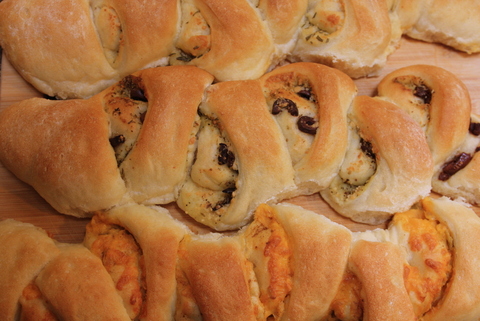 Pain D’Epi—Wheat Stalk Bread
Pain D’Epi—Wheat Stalk Bread
This French-style bread can take on a variety of flavors, depending on the ingredients you add. Break off bite-sized pieces during the meal, and freeze the leftovers.
Prepare baguette dough:
1.5 cups warm water
1.5 tablespoons granulated sugar
1.5 tablespoons olive oil
4 cups bread flour
1 teaspoon kosher salt
2 teaspoons fast-rise (bread machine) yeast
Add ingredients to bread machine; let the machine handle the mixing and first rise.
Spray countertop with cooking oil spray. Take dough out of bread machine and place on counter. Let dough rest 15 min. Divide into three portions.
Greek Pain D’Epi
2 teaspoons olive oil
1 teaspoon Greek seasoning (Cavender’s is a good option)
8 Greek olives (Kalamata olives), sliced
2 tablespoons dry Parmesan cheese
Italian Pain D’Epi
2 teaspoons olive oil
One 6-inch length of fresh rosemary stripped and chopped (or 2 teaspoons dried rosemary)
2 tablespoons dry Parmesan cheese
Roll dough out with rolling pin to 14-inch by 5-inch shape. Pour on olive oil, sprinkle on other ingredients to make either the Greek or Italian Pain D’Epi. (Recipe yields three loaves.)
Roll up dough so it’s 14 inches wide. Pinch to seal. Place dough on parchment-lined 11-inch by 17-inch cookie sheet (up to three bread loaves fit per cookie sheet). Using kitchen shears, make six cuts at a 45-degree angle to within half an inch of bottom of dough. Position each cut dough section in the opposite direction, keeping bottom of dough intact.
Cover with flour-sack cloth, or spray plastic wrap with cooking oil spray and cover. Let dough rise 45 minutes. Place pan in middle of preheated 425-degree oven. Mist inside of oven with water to create steam. Bake for 17 to 23 minutes, or until lightly browned. Serve warm with olive oil for dipping.
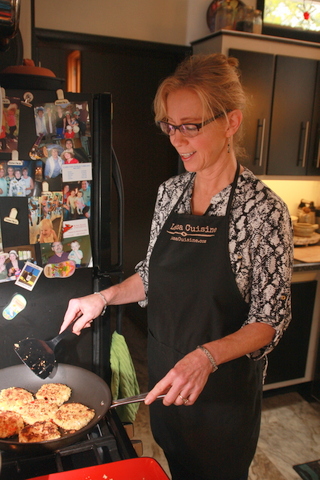 Chicken Piccata
Chicken Piccata
3 tablespoons extra virgin olive oil
2 boneless, skinless chicken breasts, butterflied and pounded to approximately one-quarter inch thickness
Salt and pepper, to taste
Lemon & Butter Cream Sauce for Chicken Piccata
4 tablespoons butter
3 tablespoons shallots, minced
1 pound baby bella (cremini) mushrooms, sliced
1 / 3 cup white wine (Chardonnay is a good option)
1 tablespoon capers
1 / 4 cup lemon juice
1.5 tablespoons cornstarch
1 14-ounce can chicken broth or stock
3 / 4 cup heavy cream or half-and-half
Salt and pepper, to taste
1 pound angel hair pasta, cooked, drained and buttered
Parmesan or asiago cheese
Heat a generous amount of oil in large skillet over medium heat. Salt and pepper the chicken; sauté for approximately three minutes per side. Set cooked chicken aside, covered in foil, on baking sheet in 275-degree oven. Continue sautéing all the chicken and place in oven.
Add butter to drippings in the skillet. Sauté shallots and mushrooms 5 to 7 minutes until browned. Increase heat and add wine, boiling 2 minutes to reduce the liquid. Add capers and lemon juice; simmer two minutes. Dissolve cornstarch in chicken broth and add to pan. Boil mixture down for two to three minutes. Reduce heat and whisk in cream. Simmer until sauce thickens slightly.
Place chicken on pasta and ladle sauce over half the plate, top with Parmesan or asiago cheese.
Serves 4.
This article first appeared in Farm News, Oct. 2016
P.S. Thanks for joining me. I’m glad you’re here.
@Copyright 2016 Darcy Maulsby & Co.


